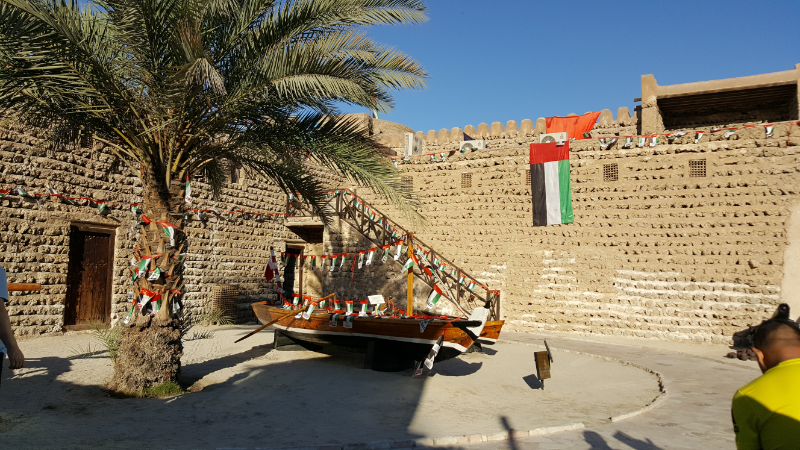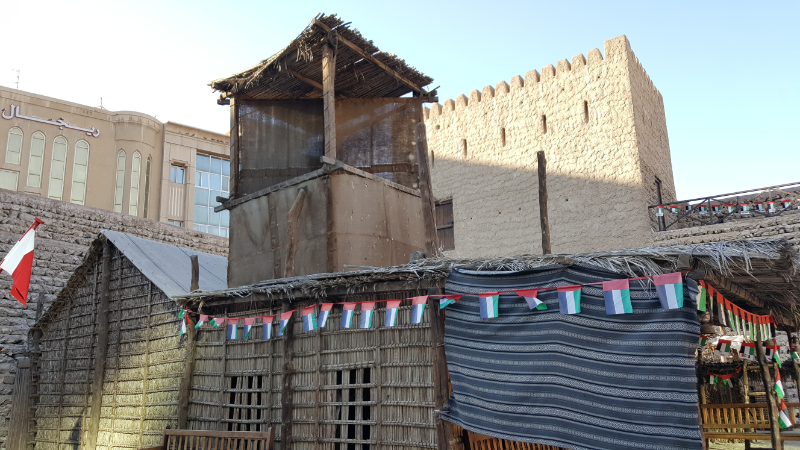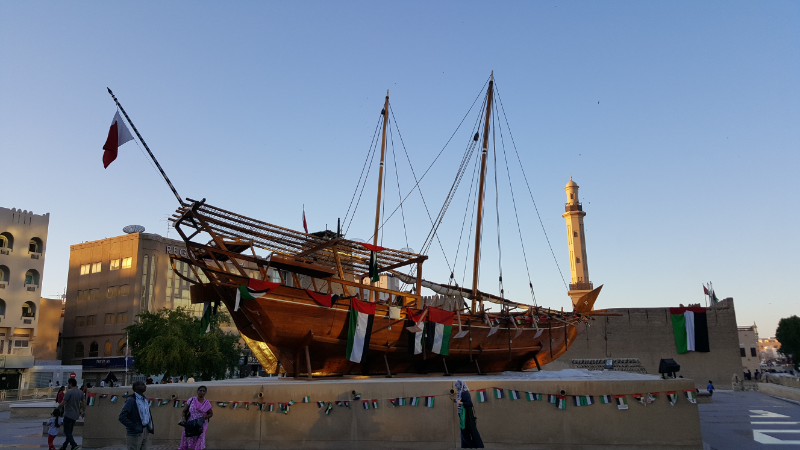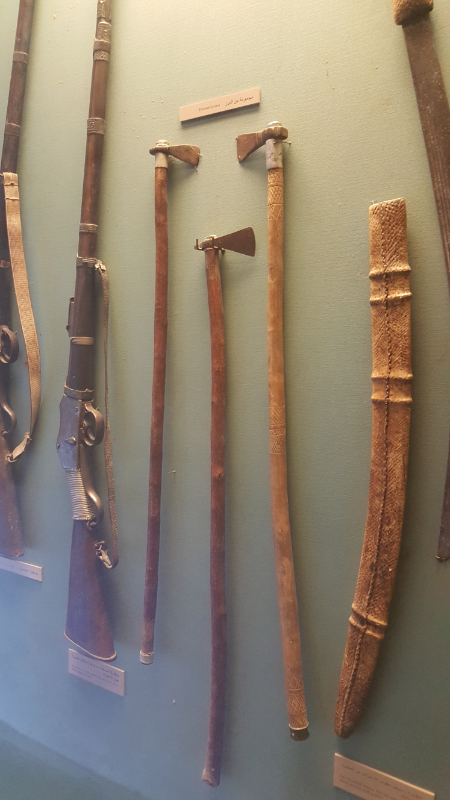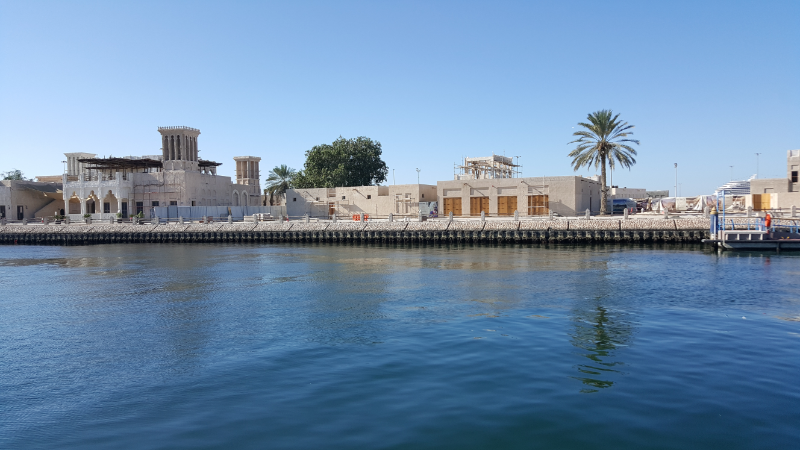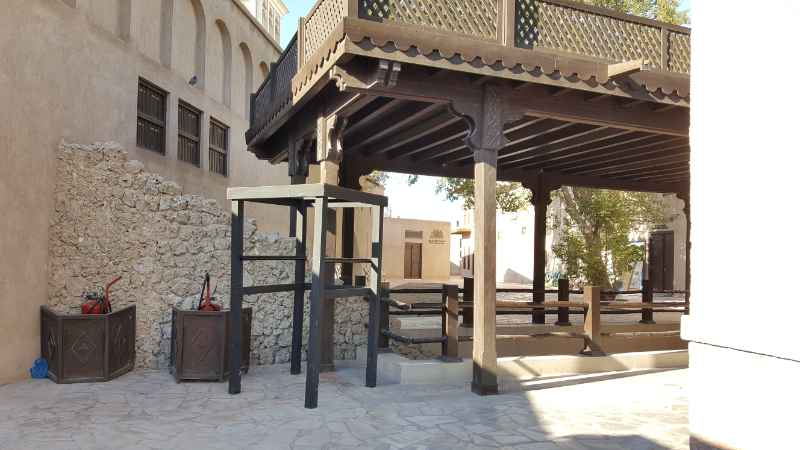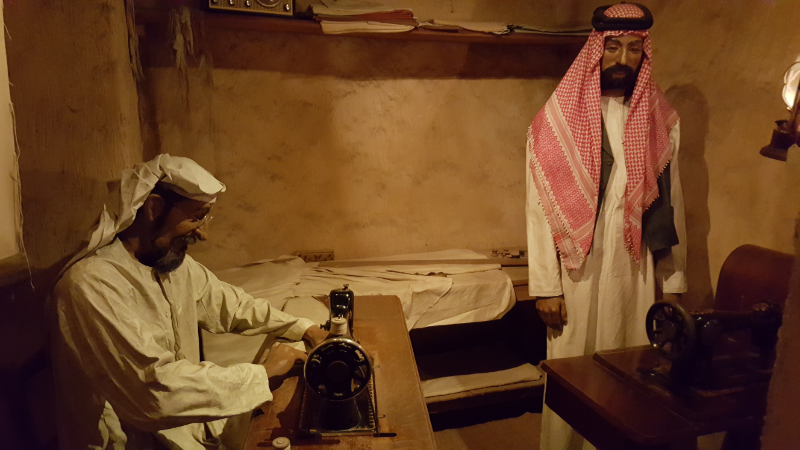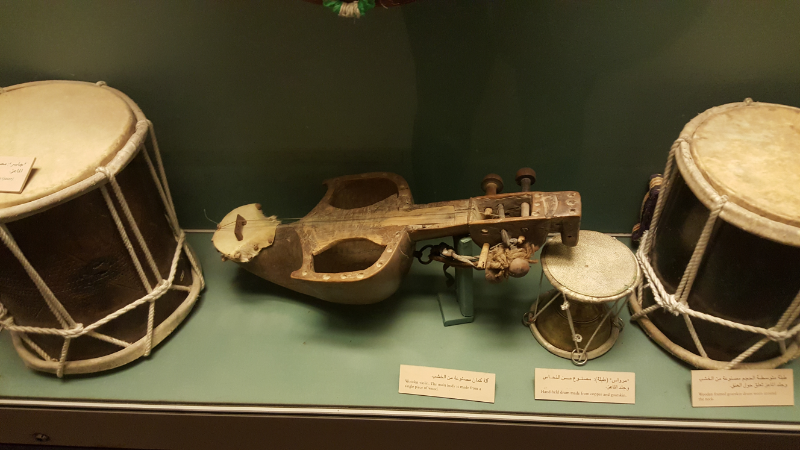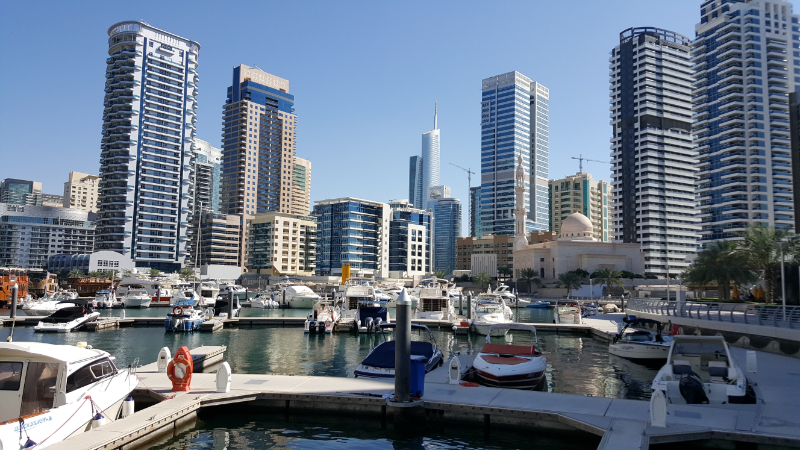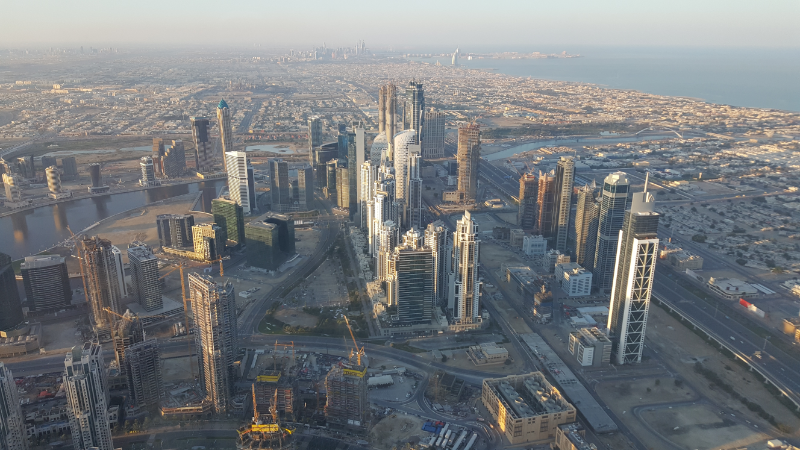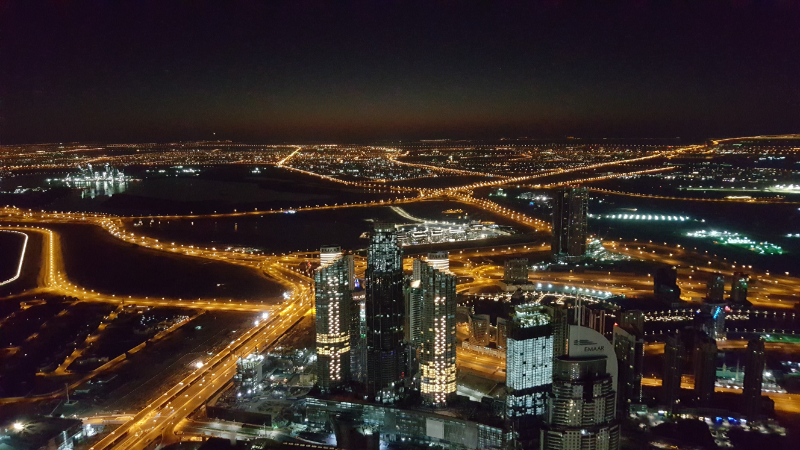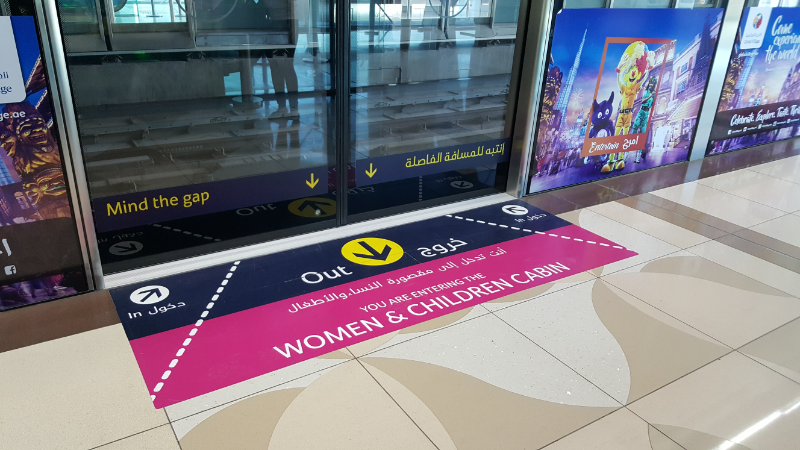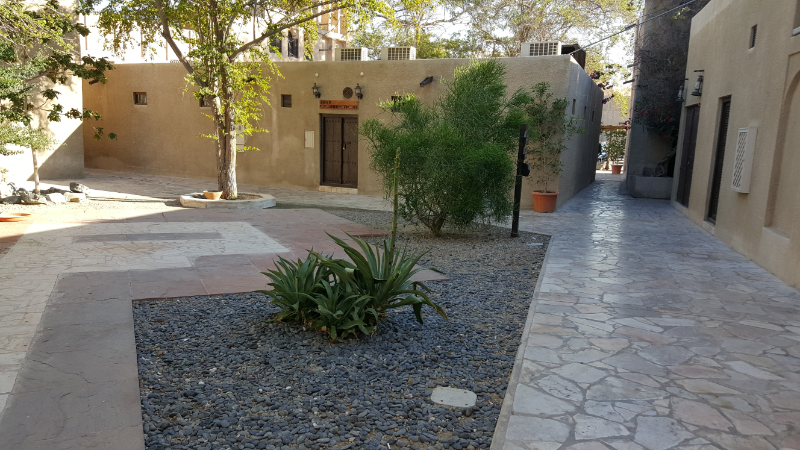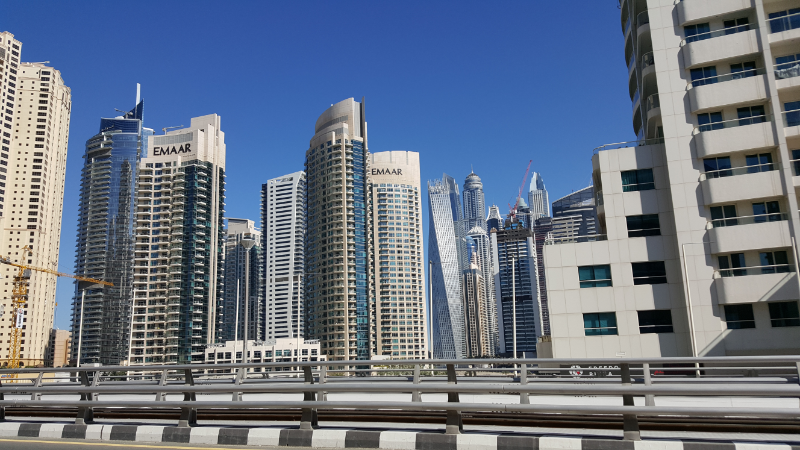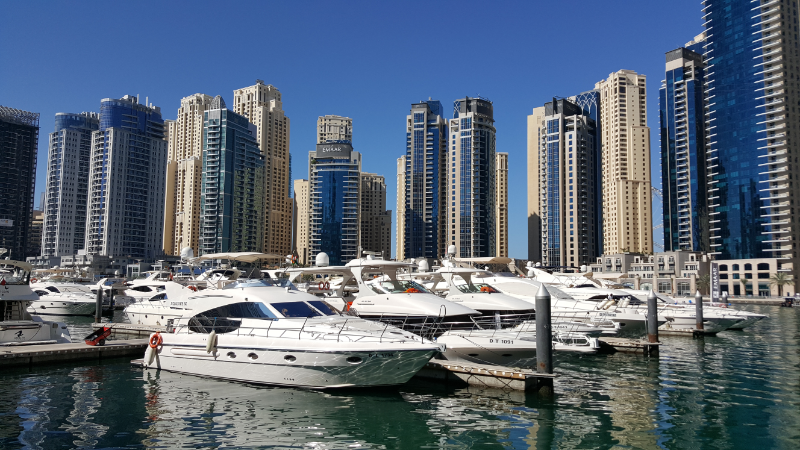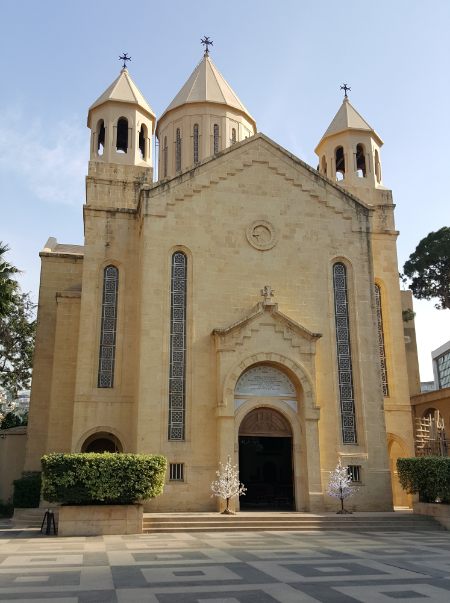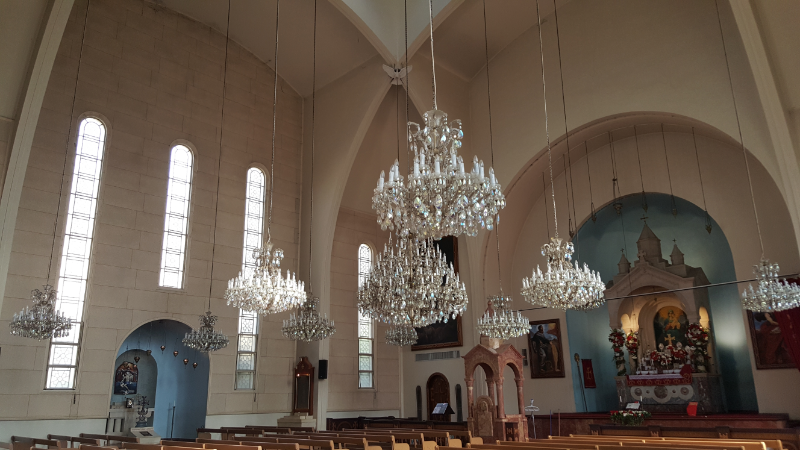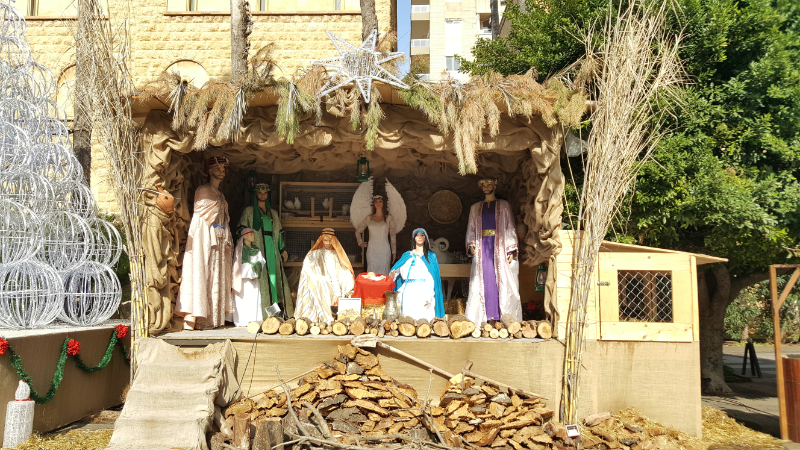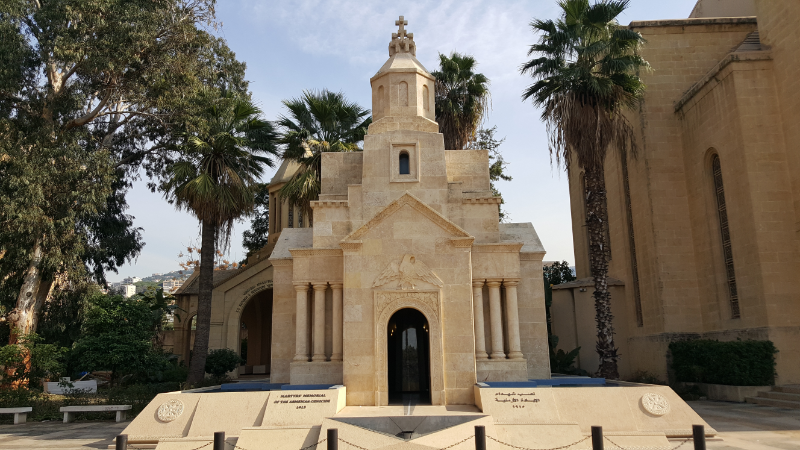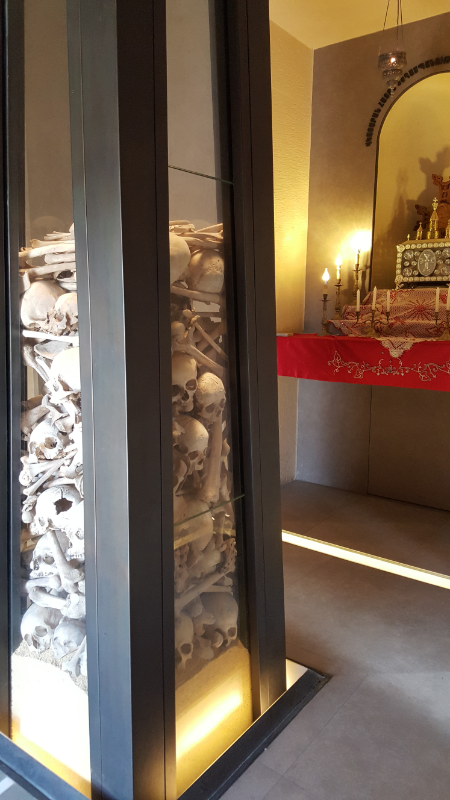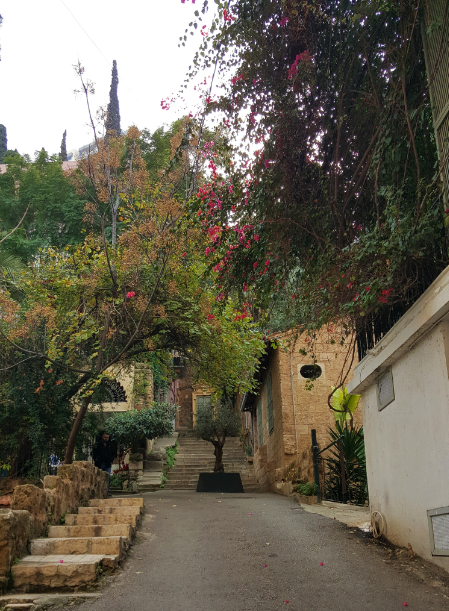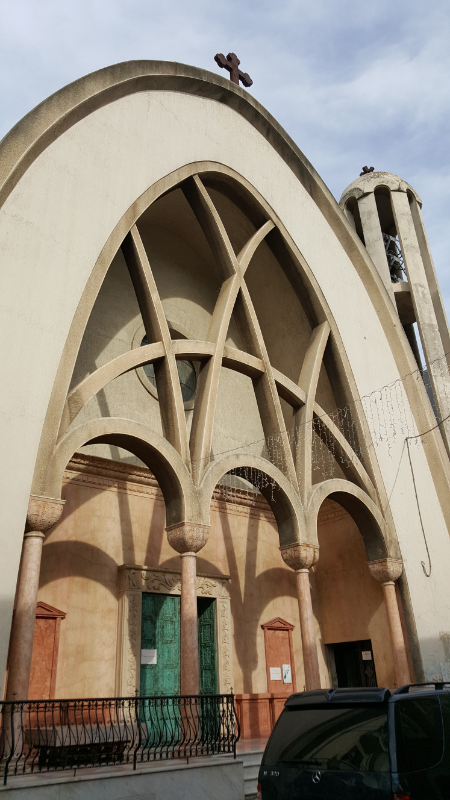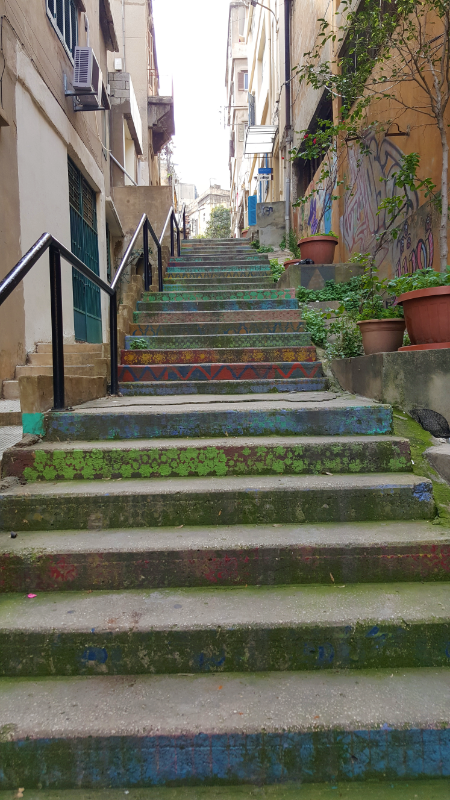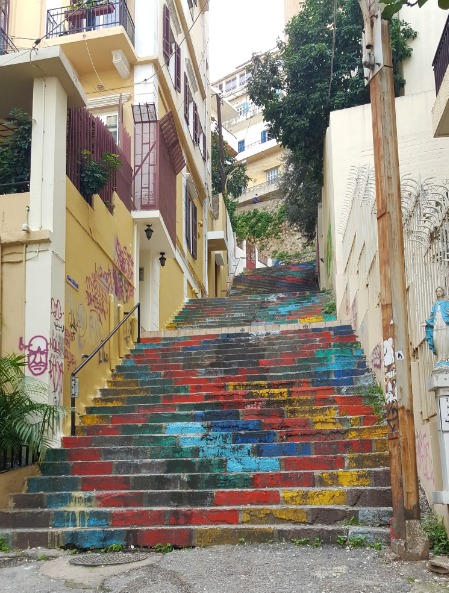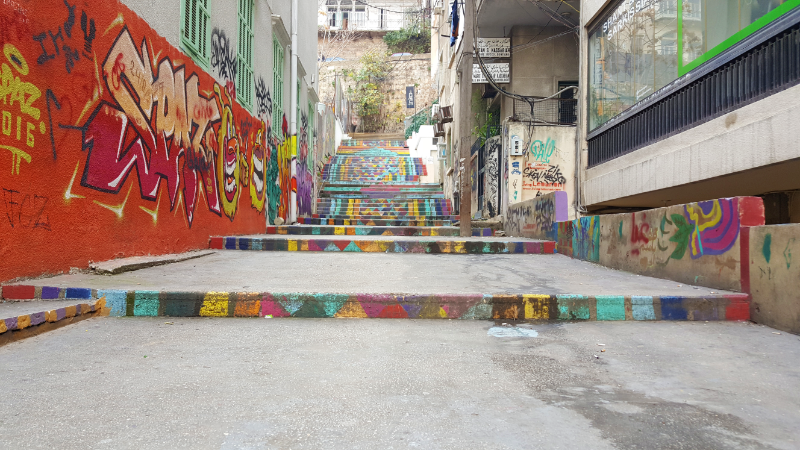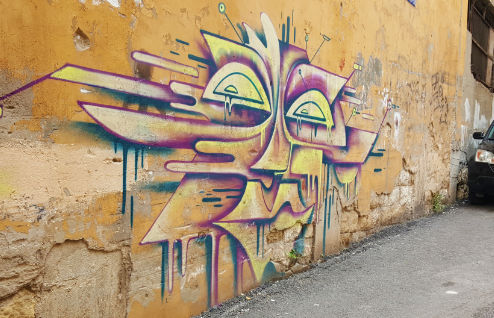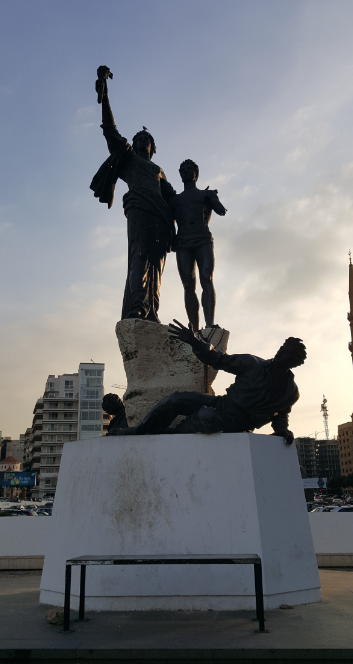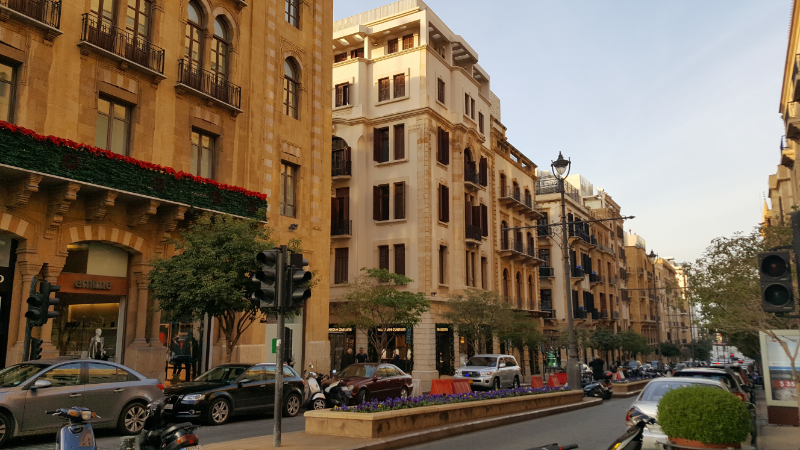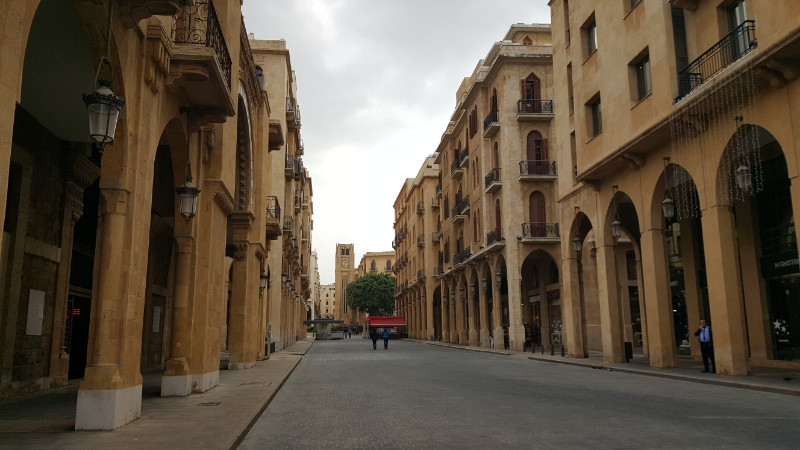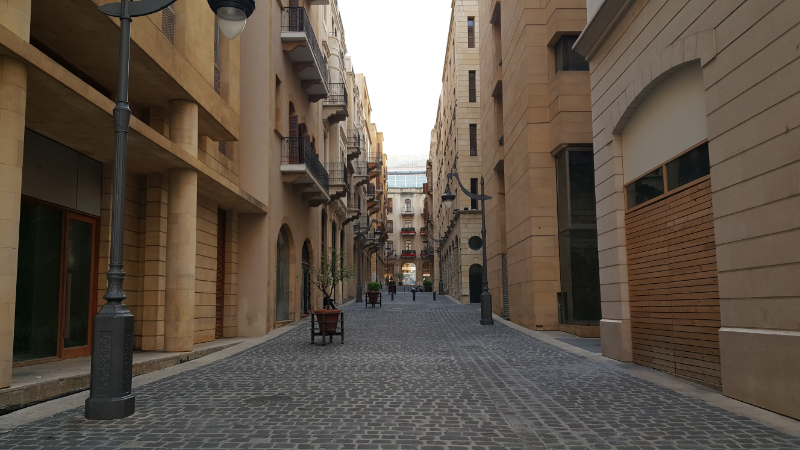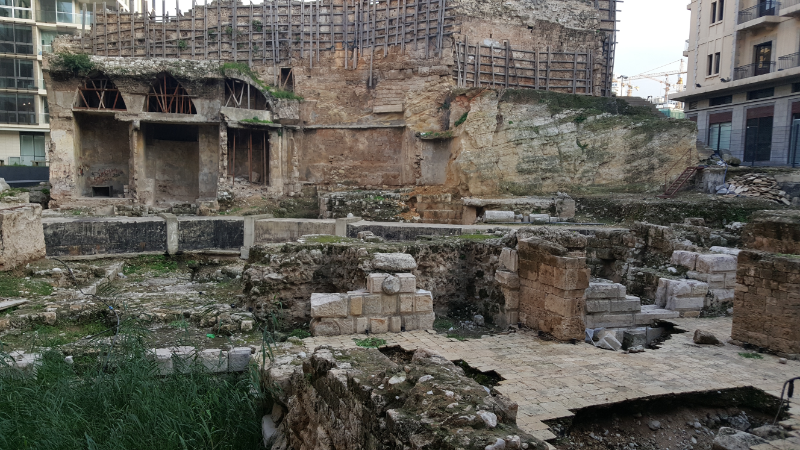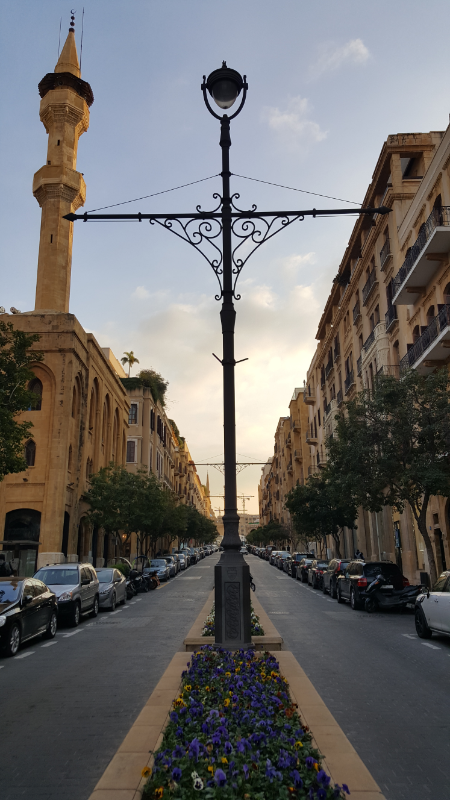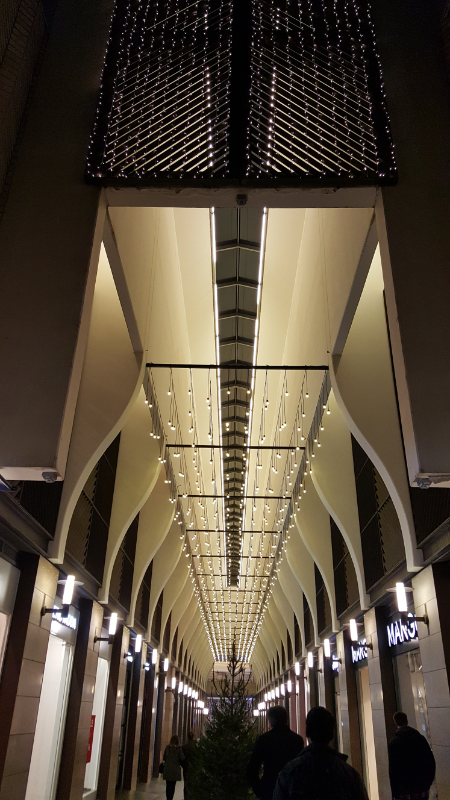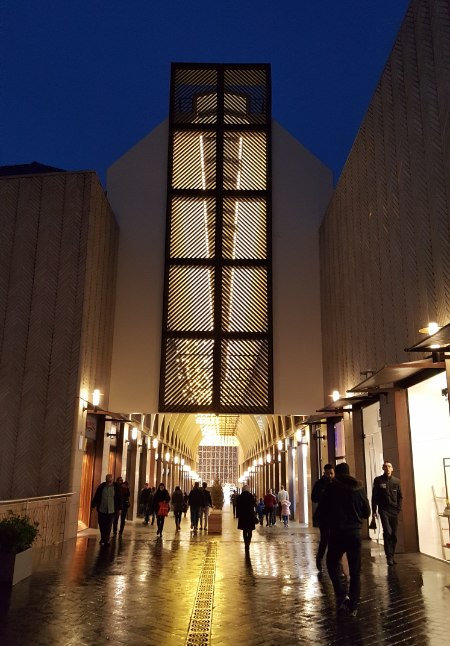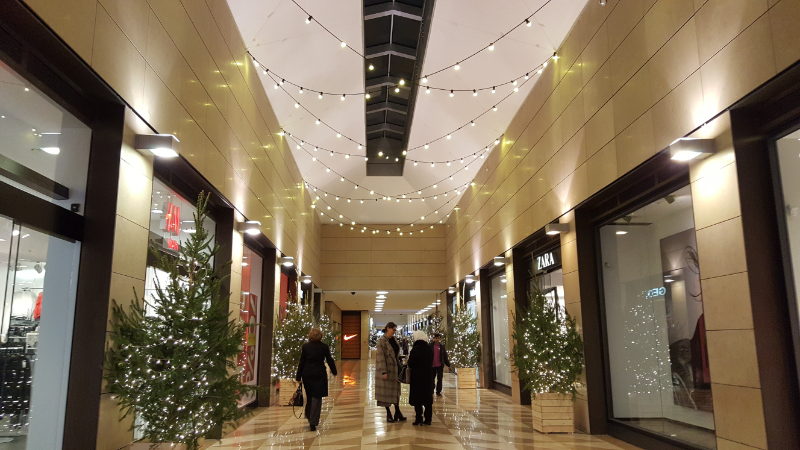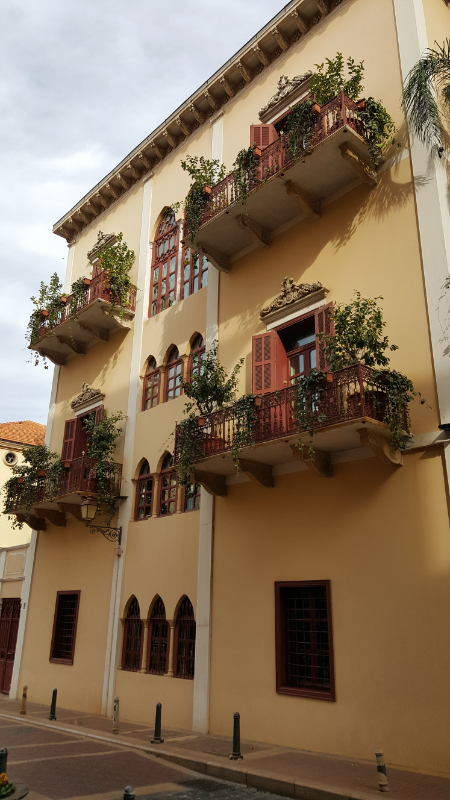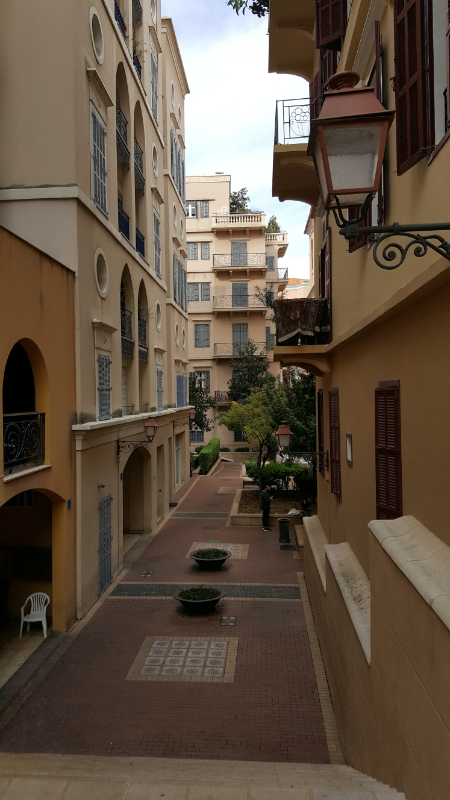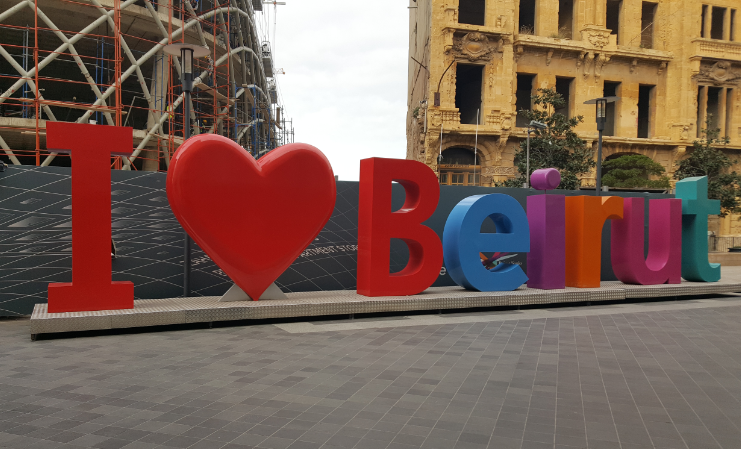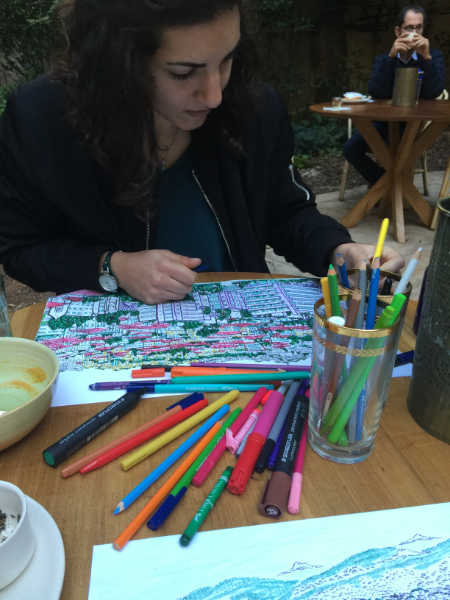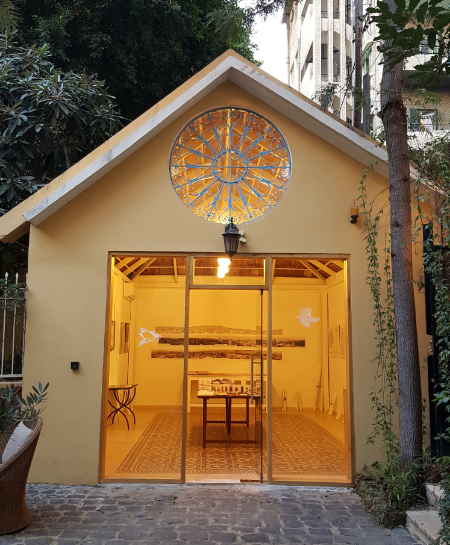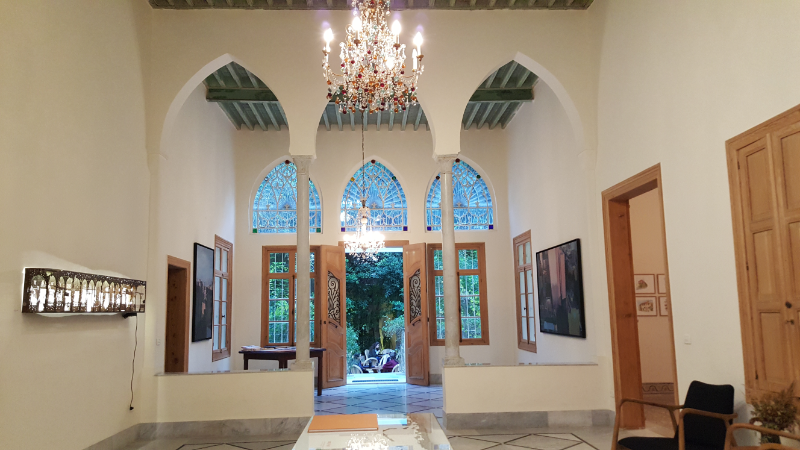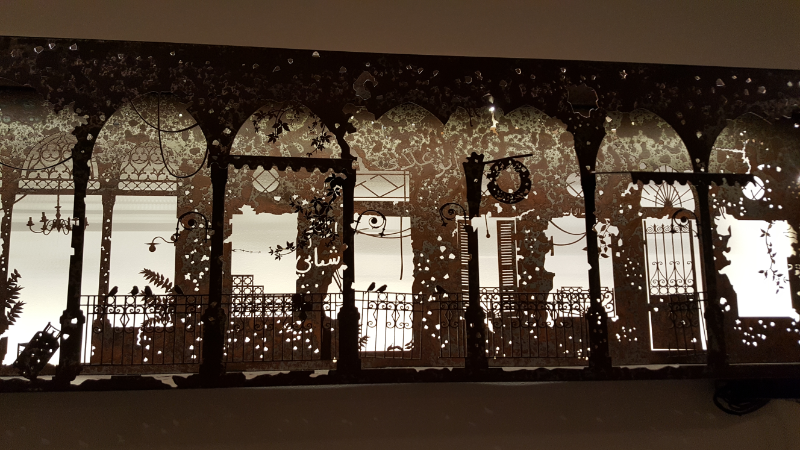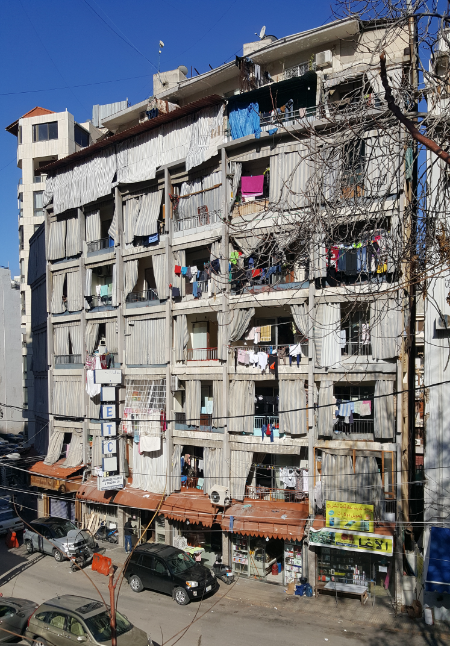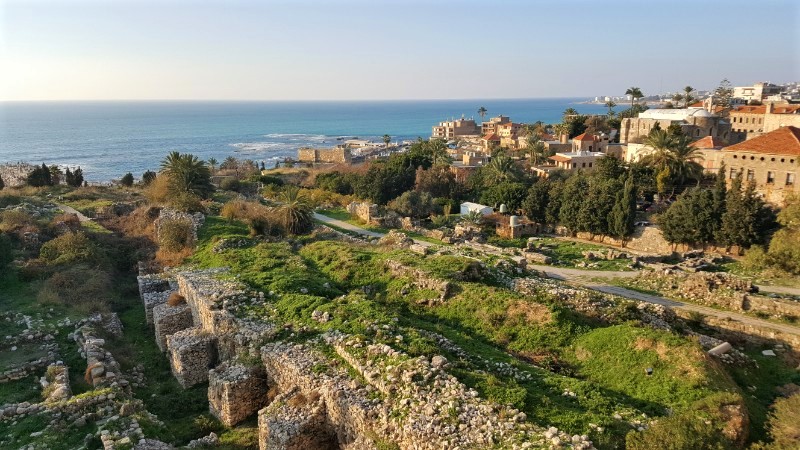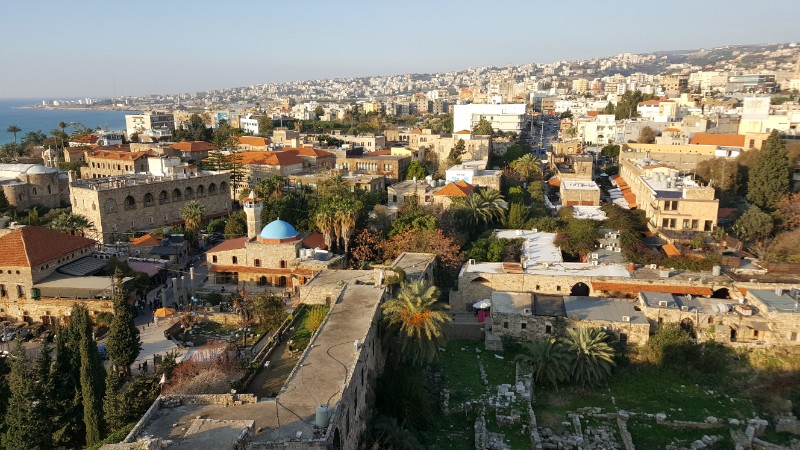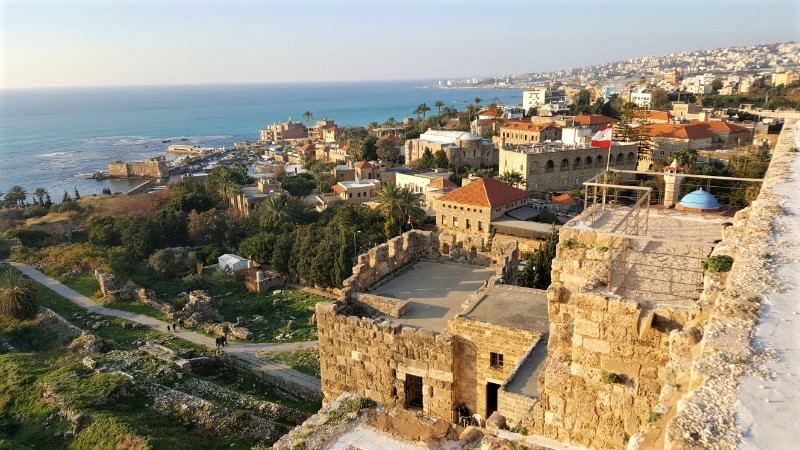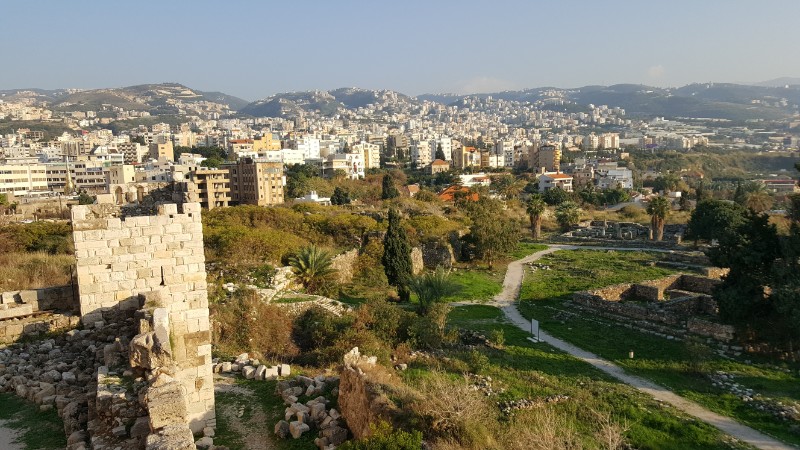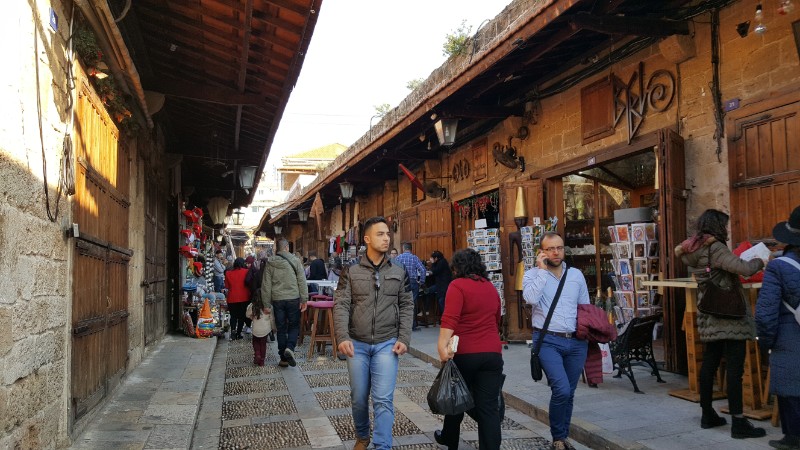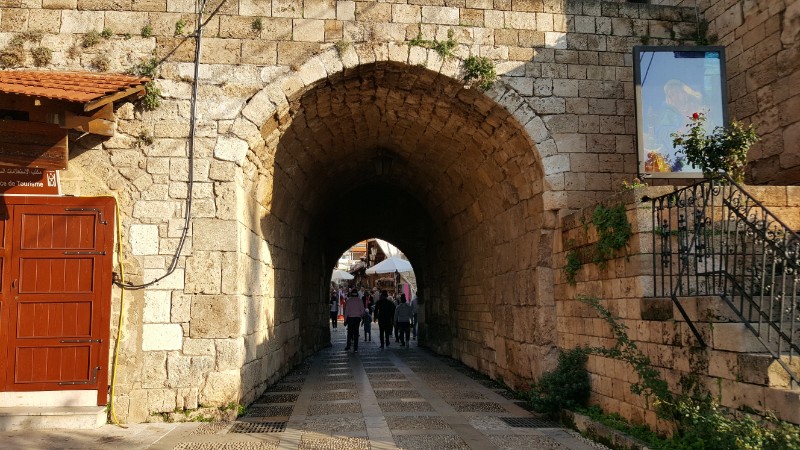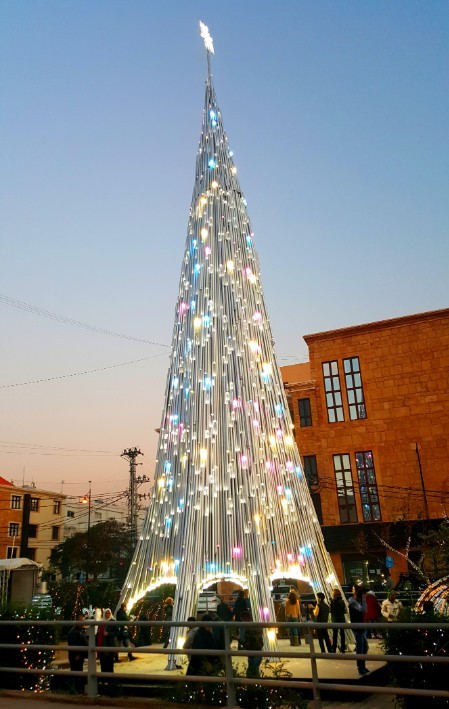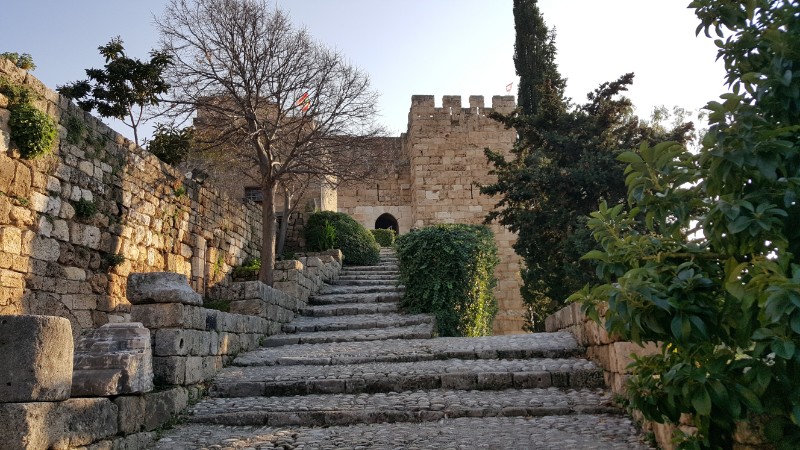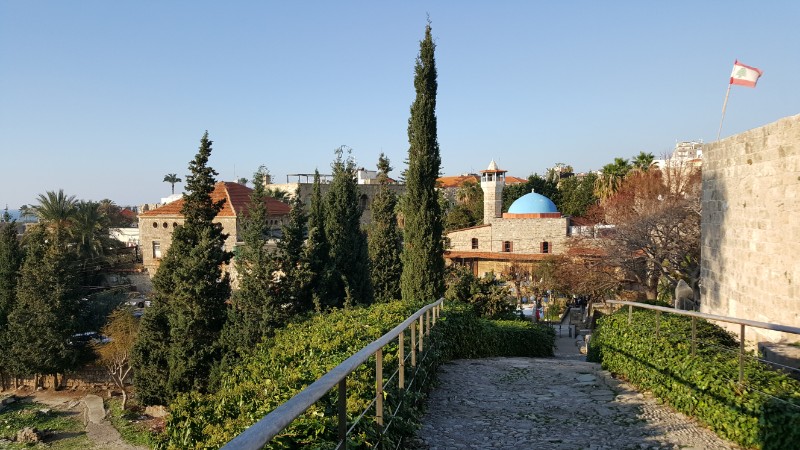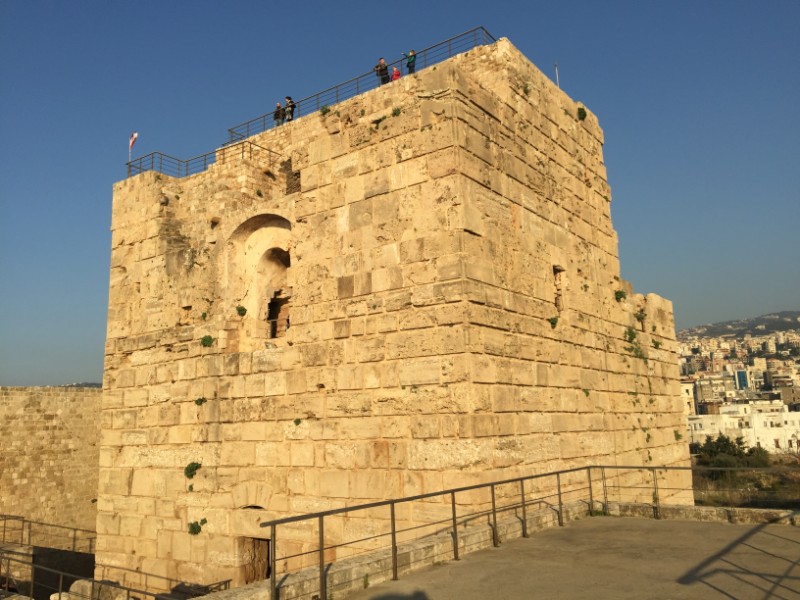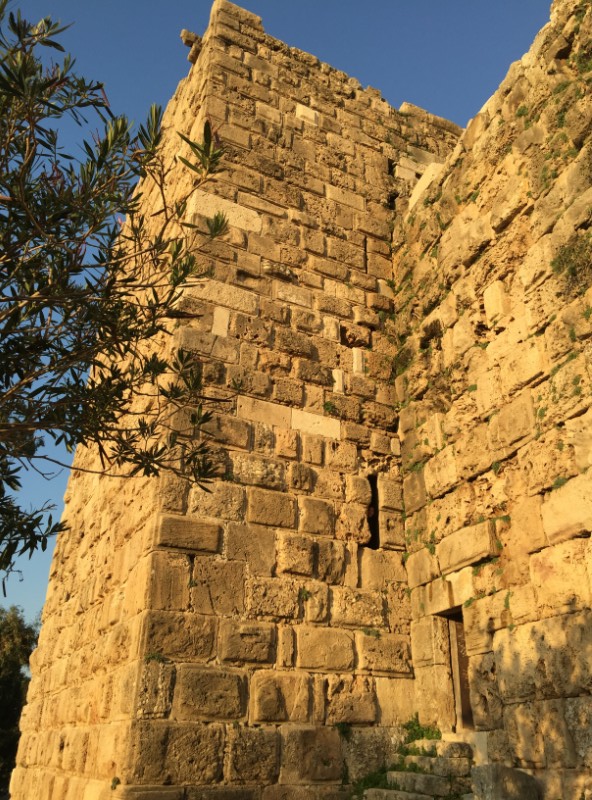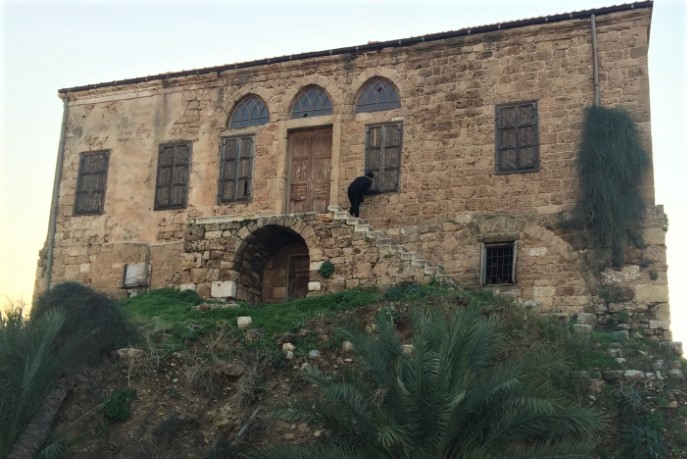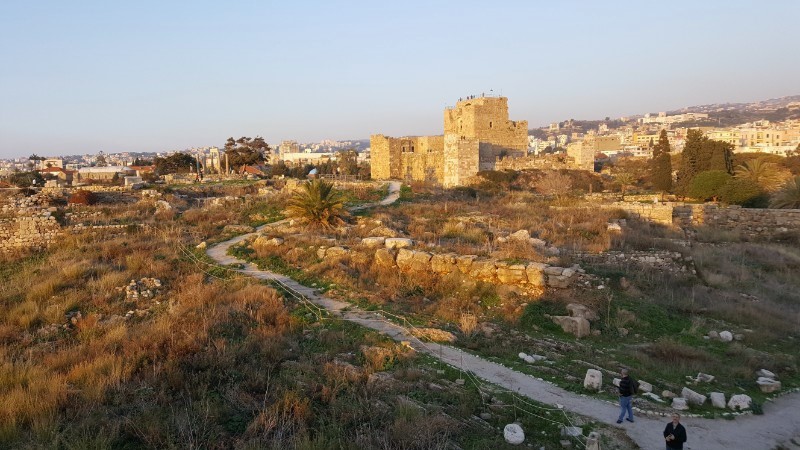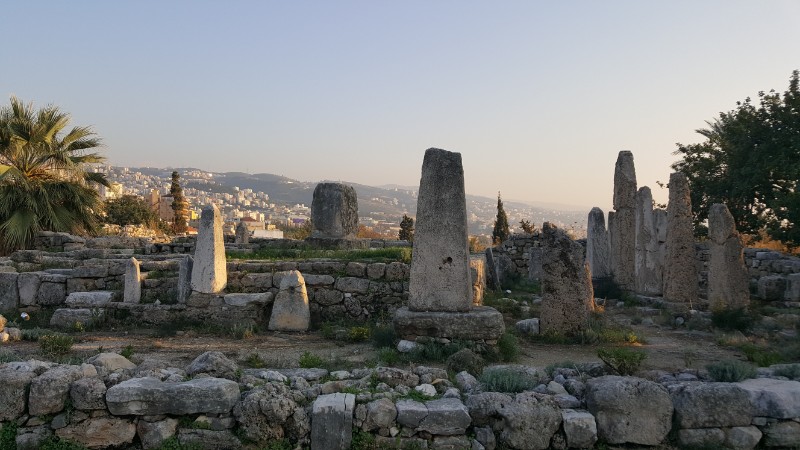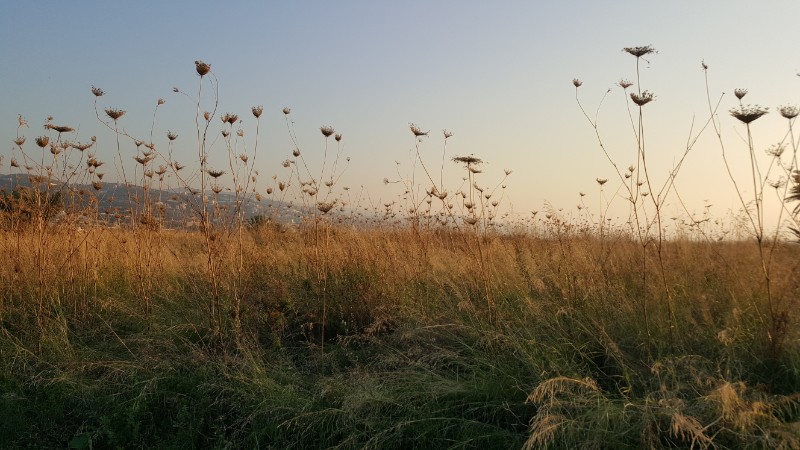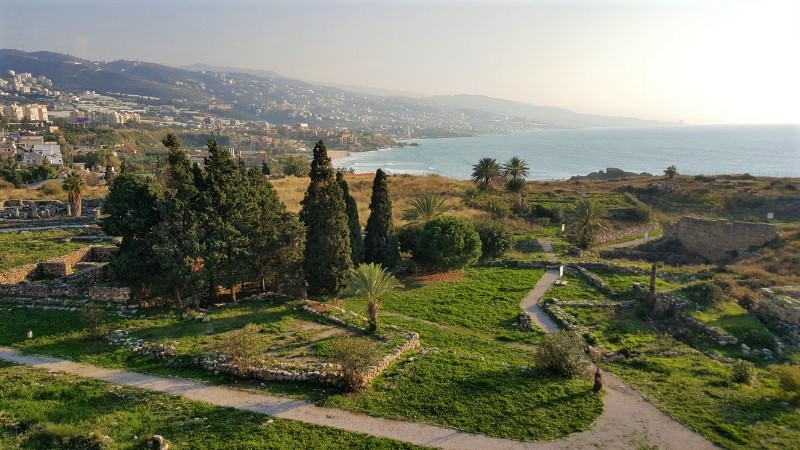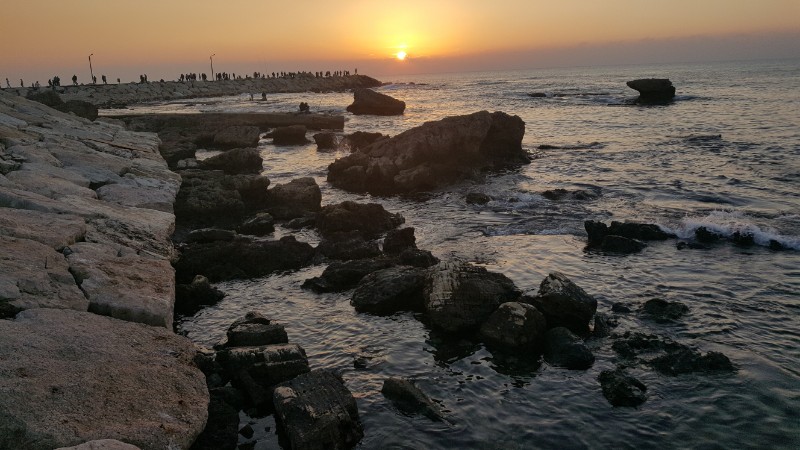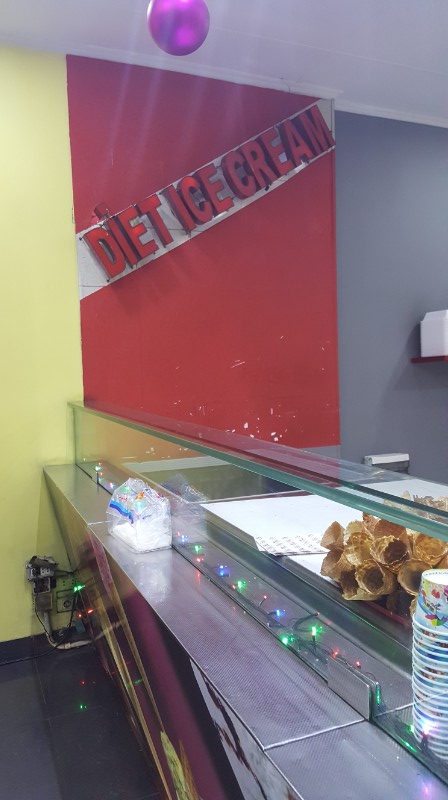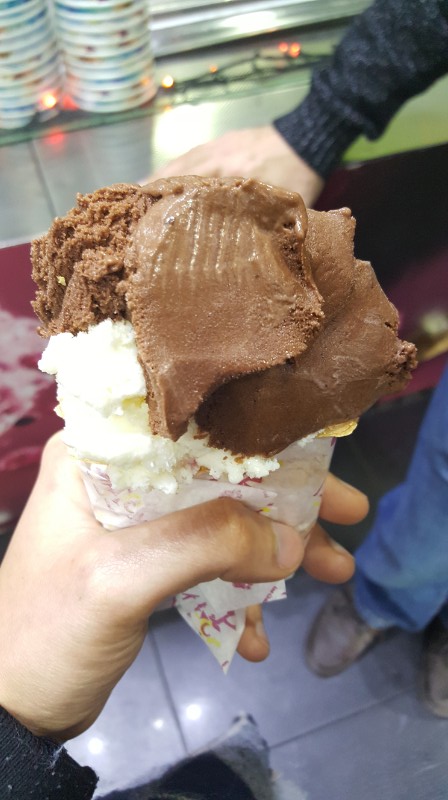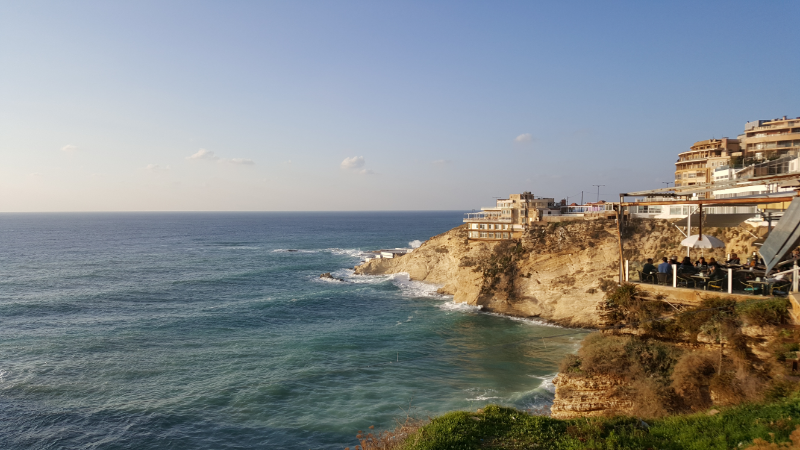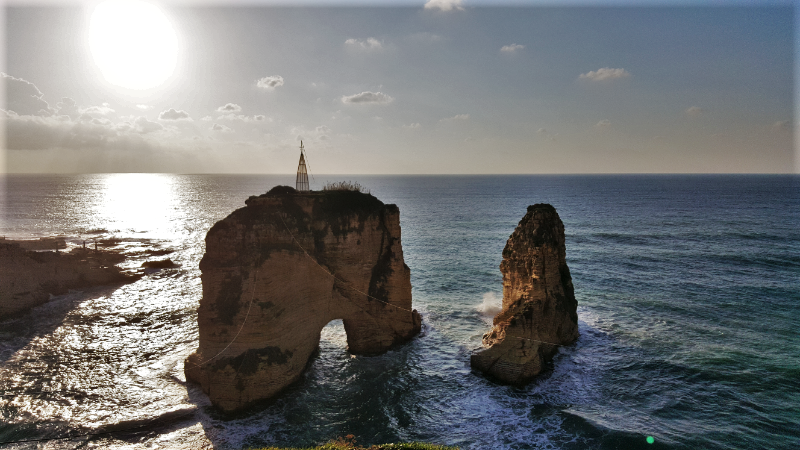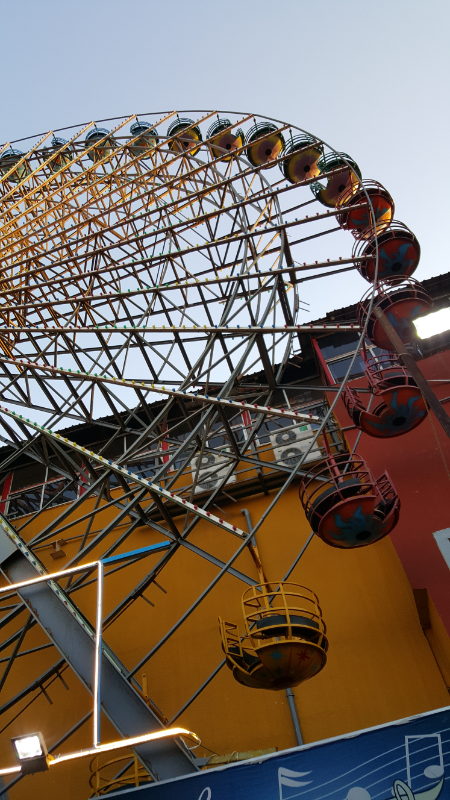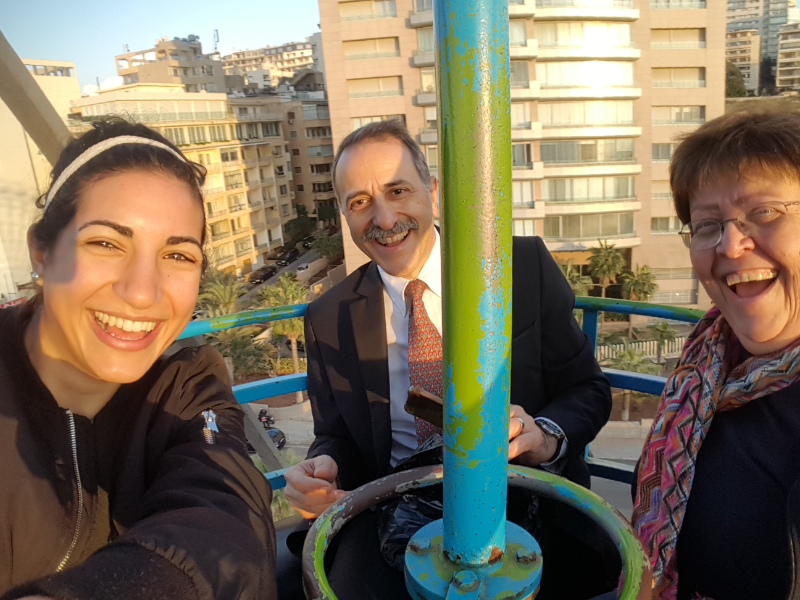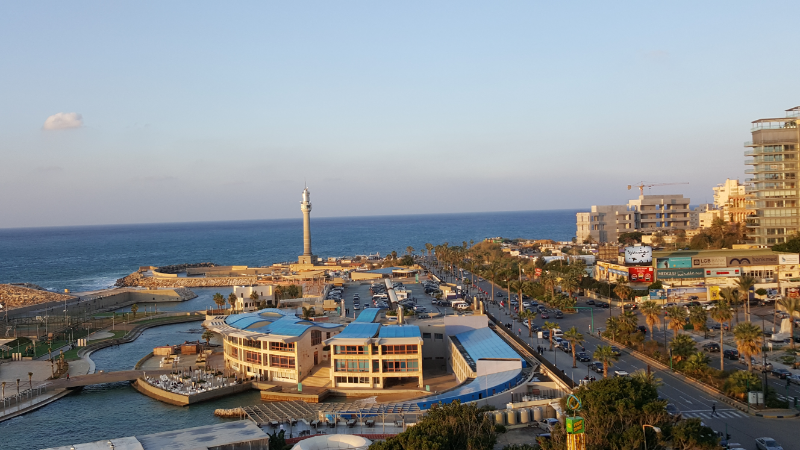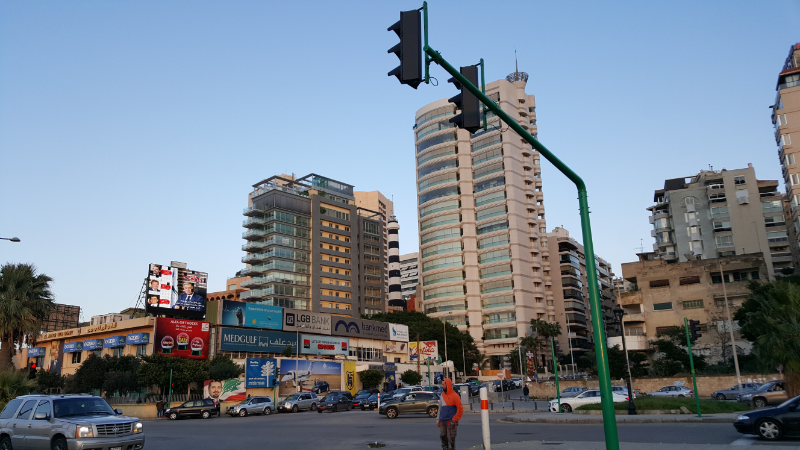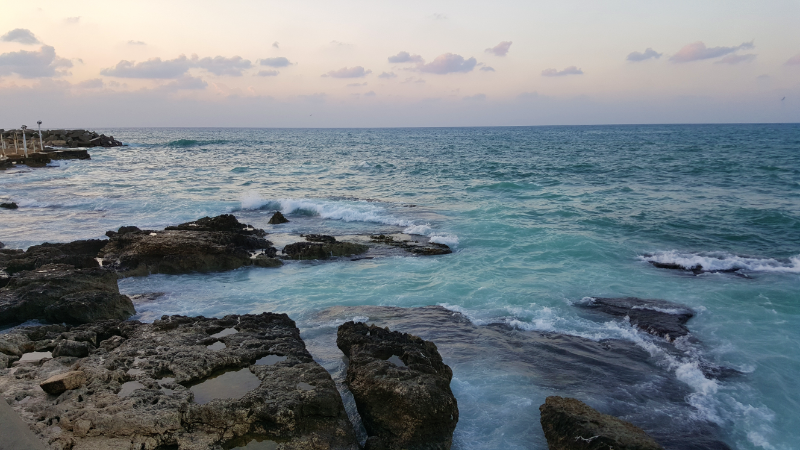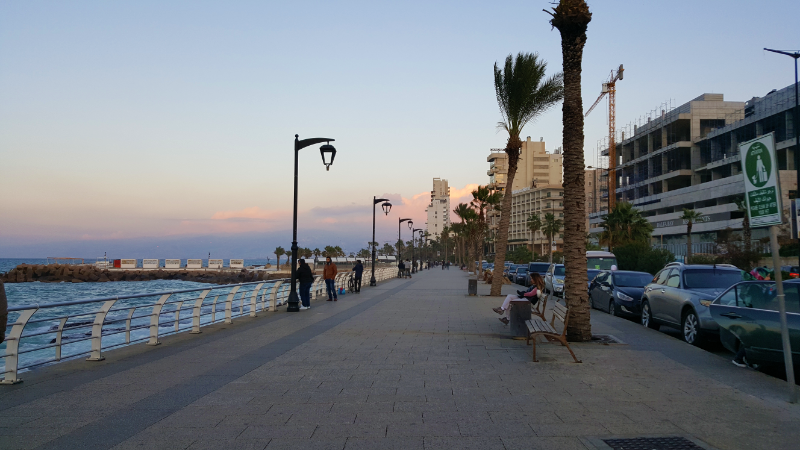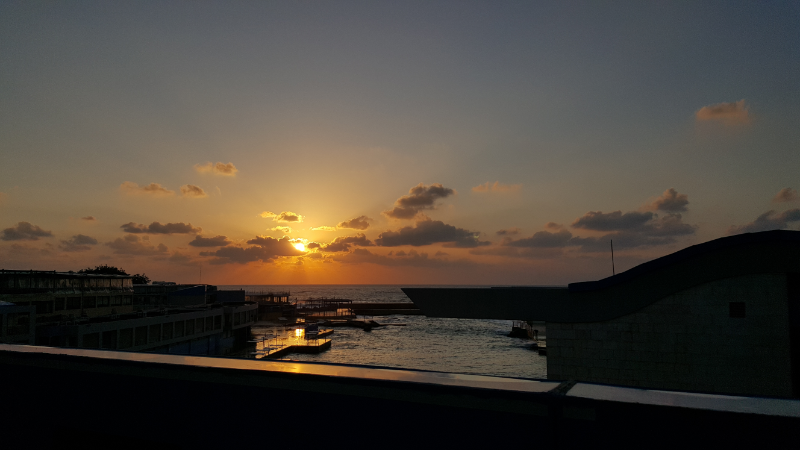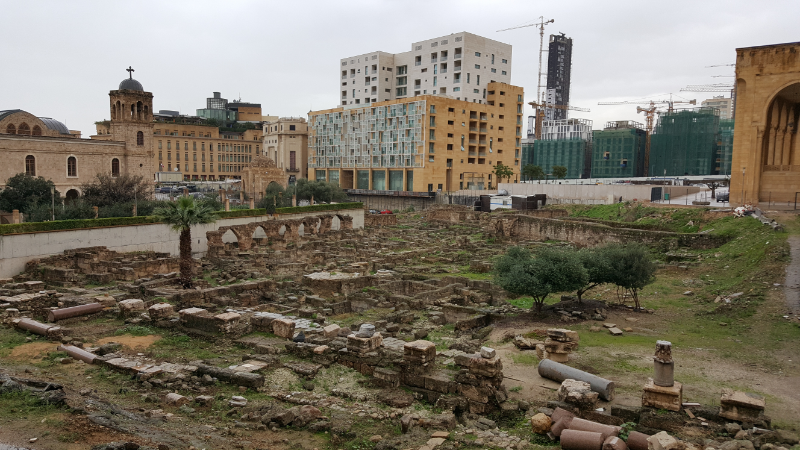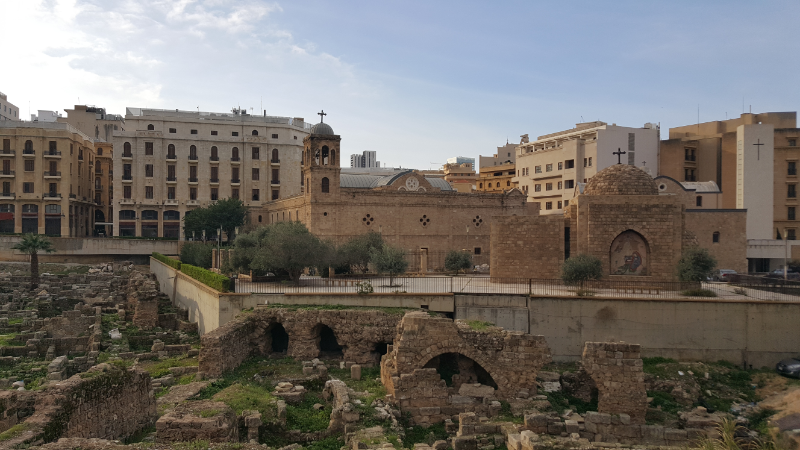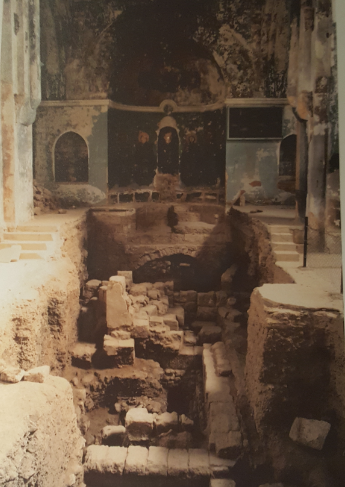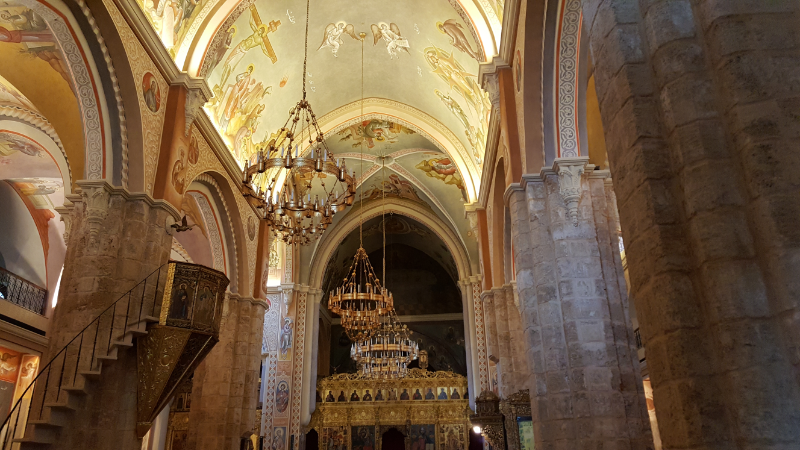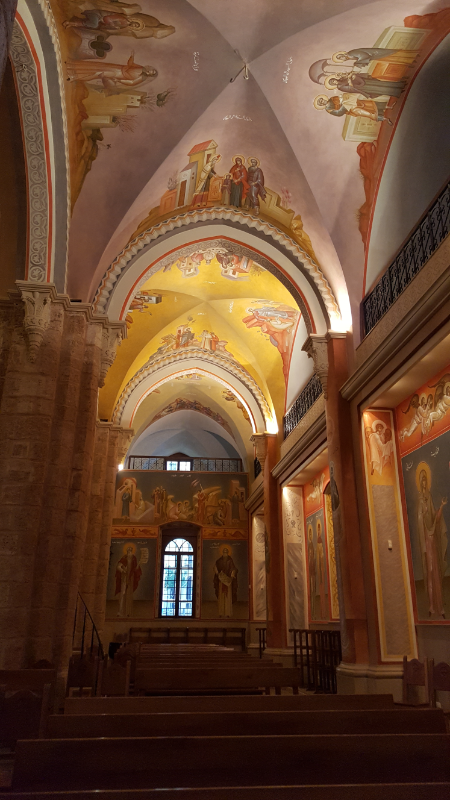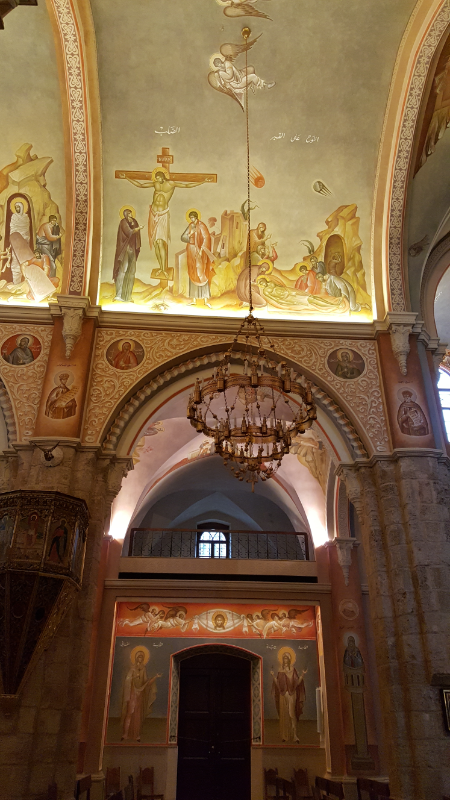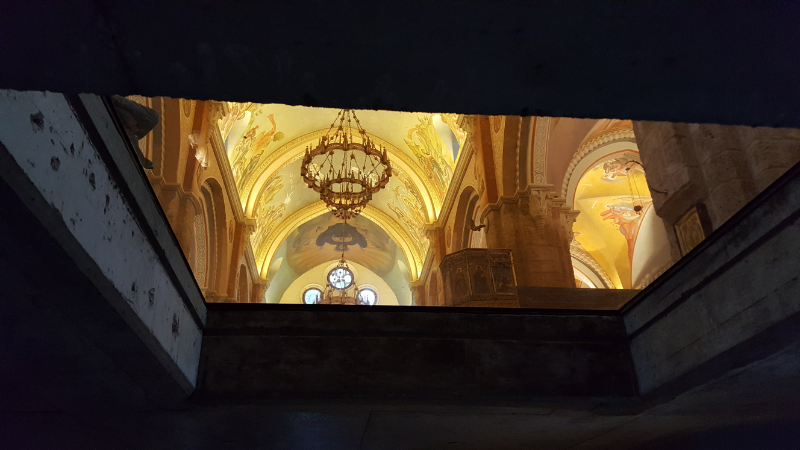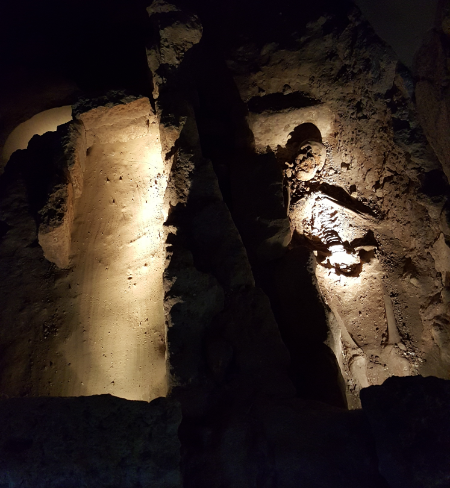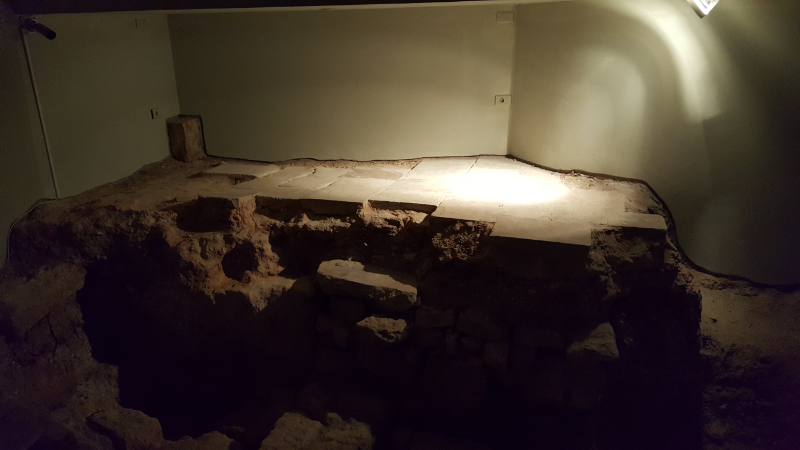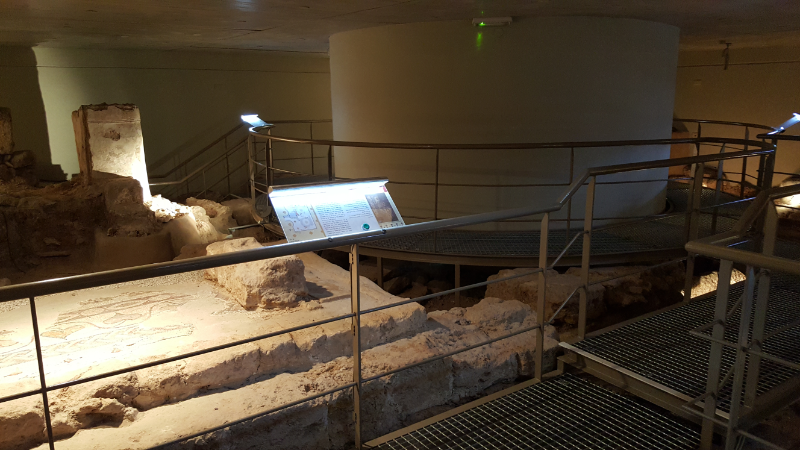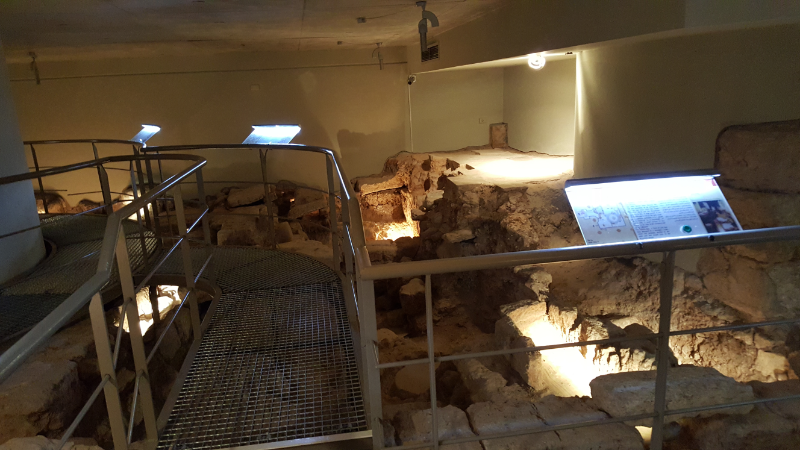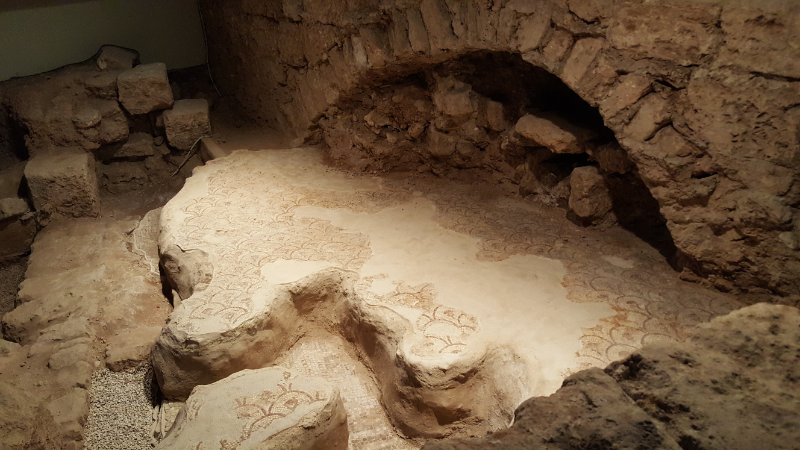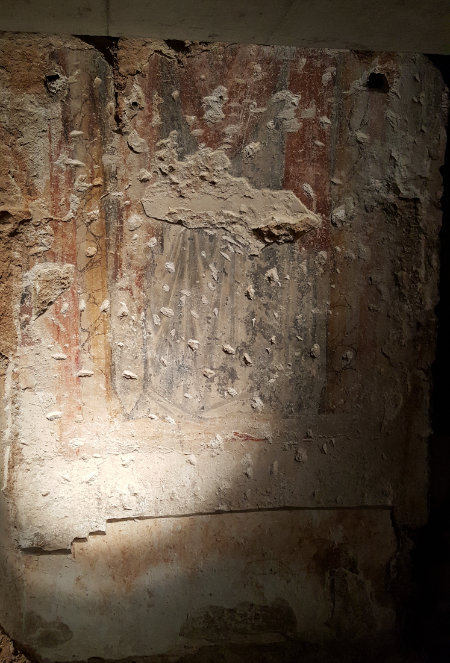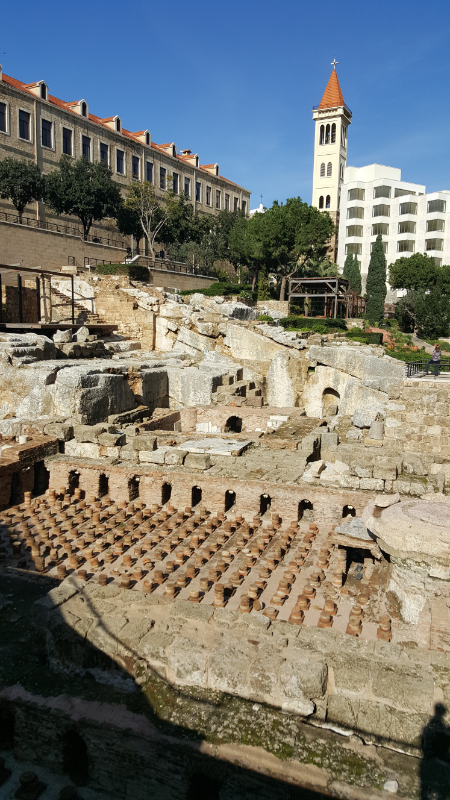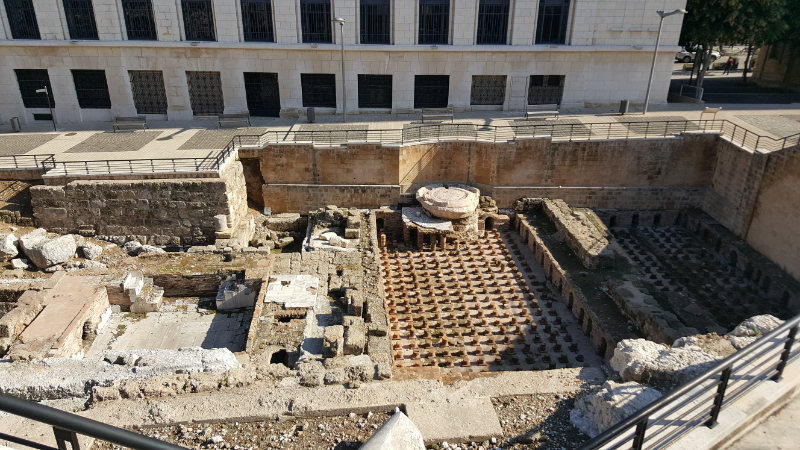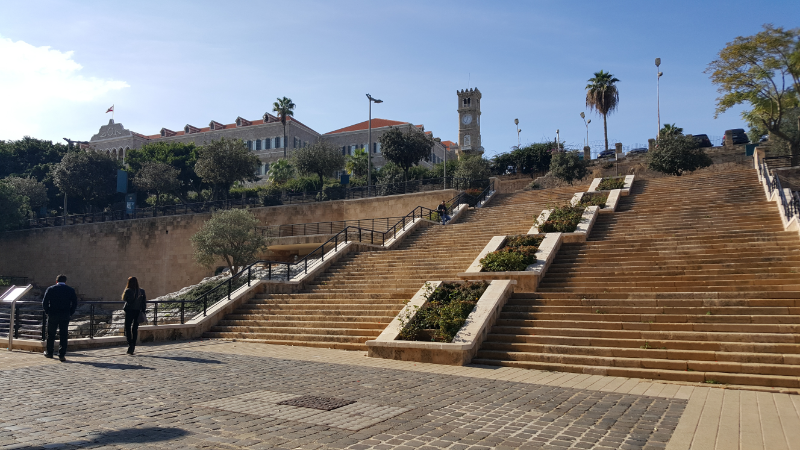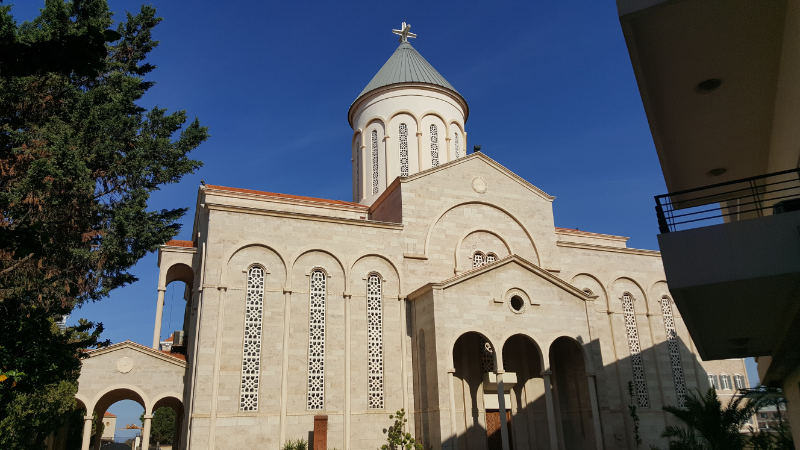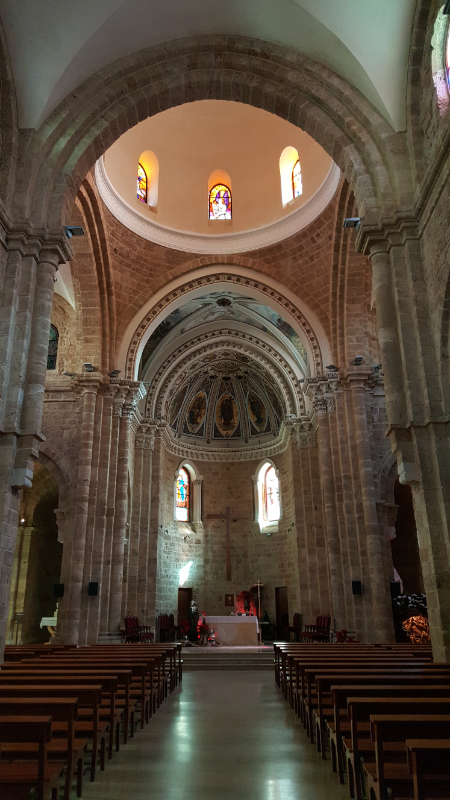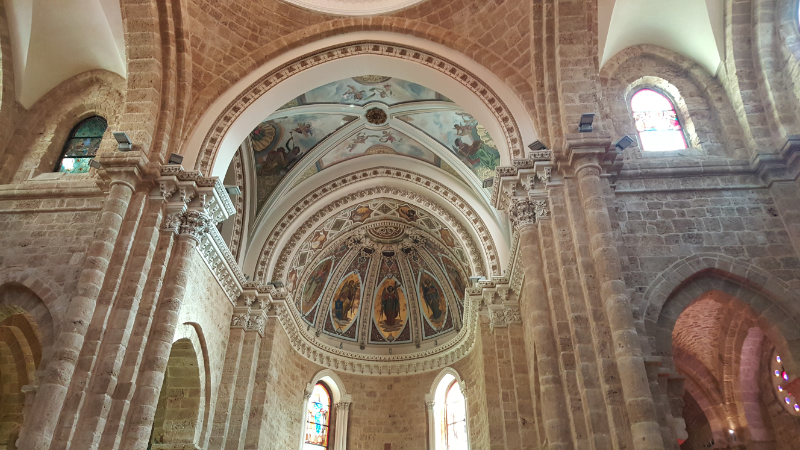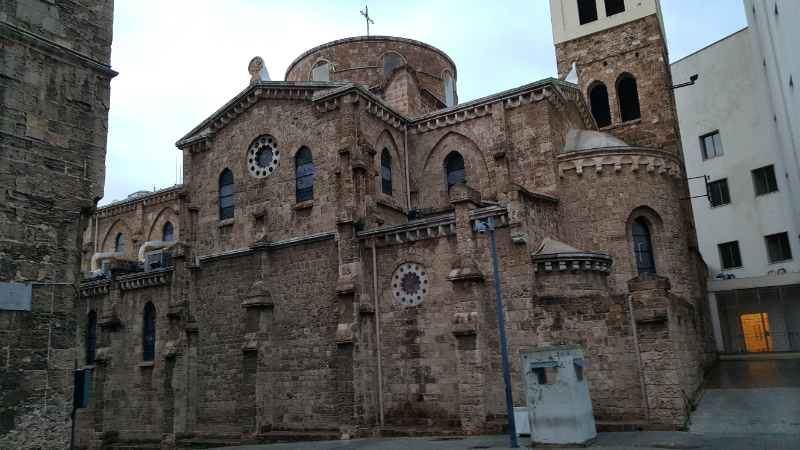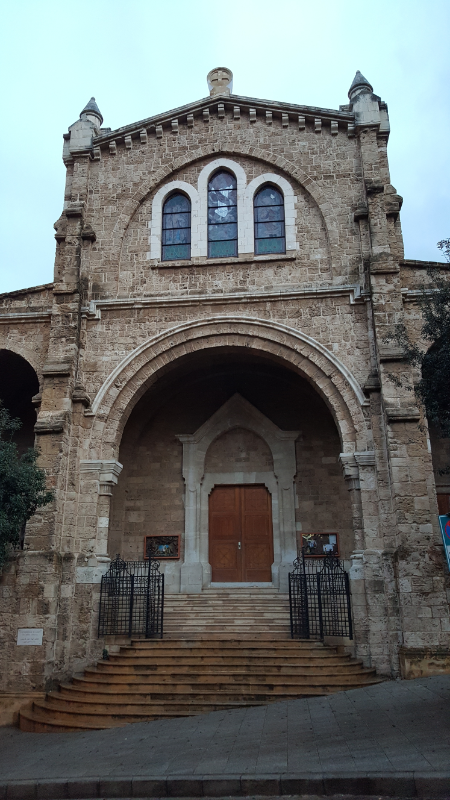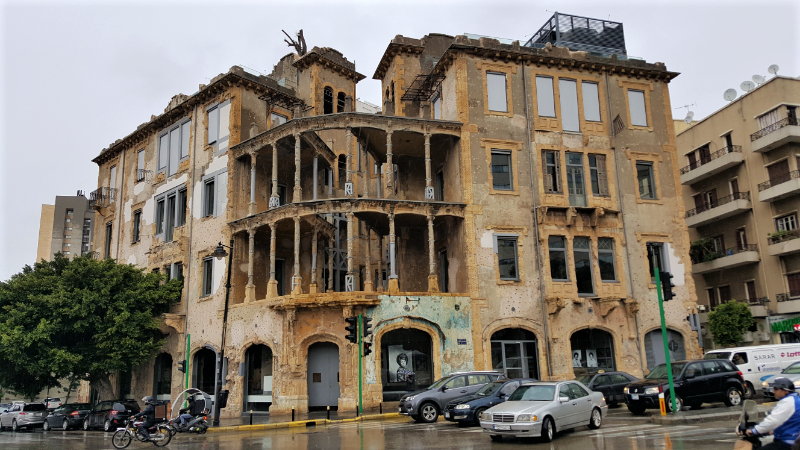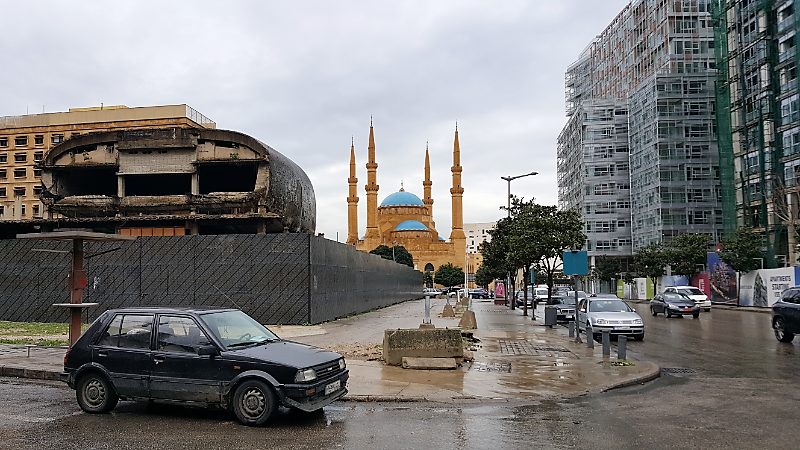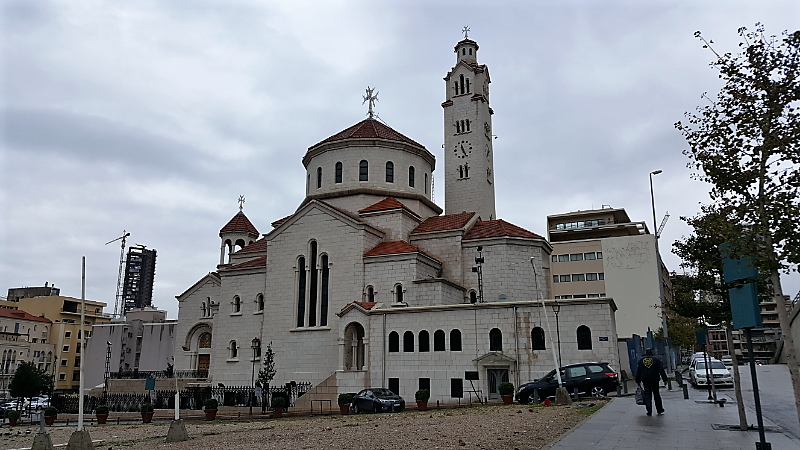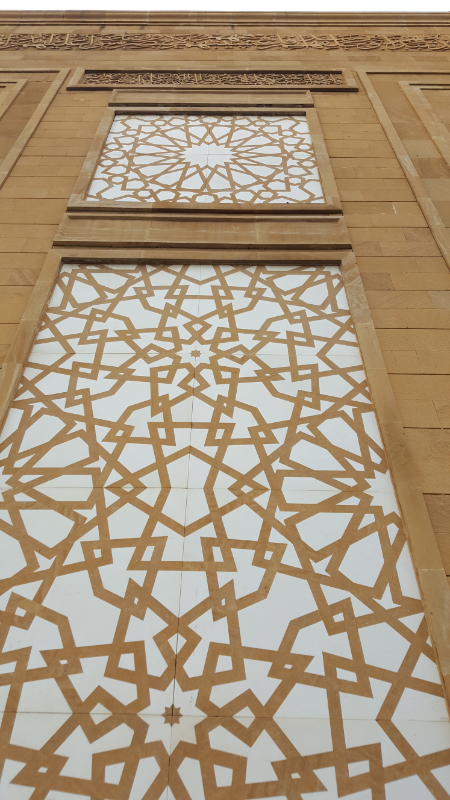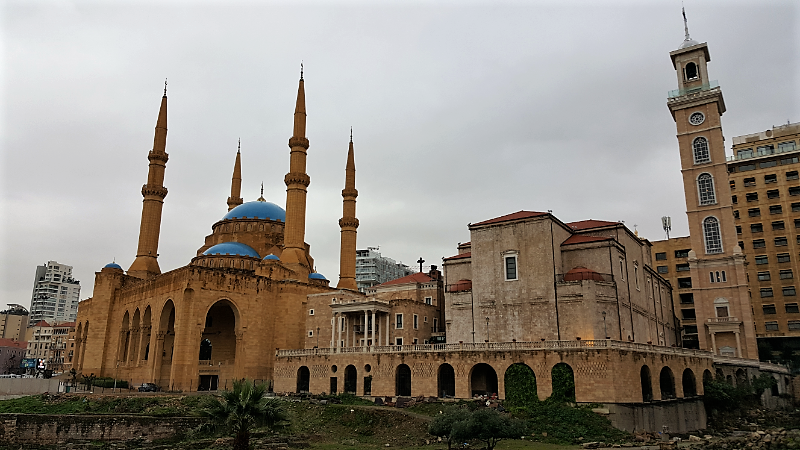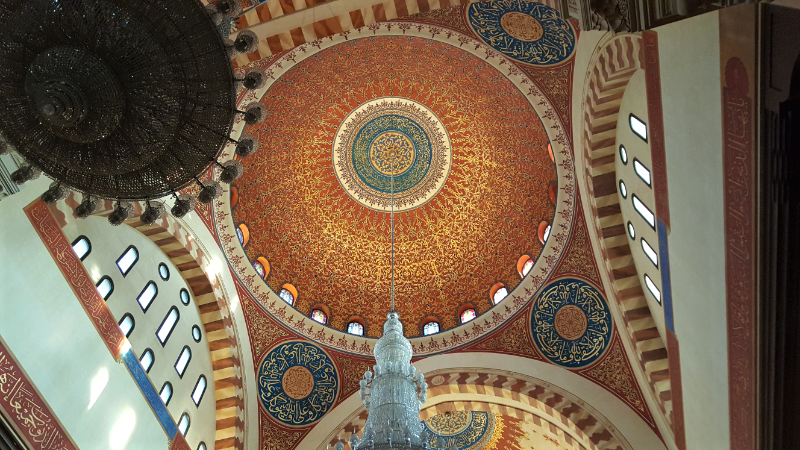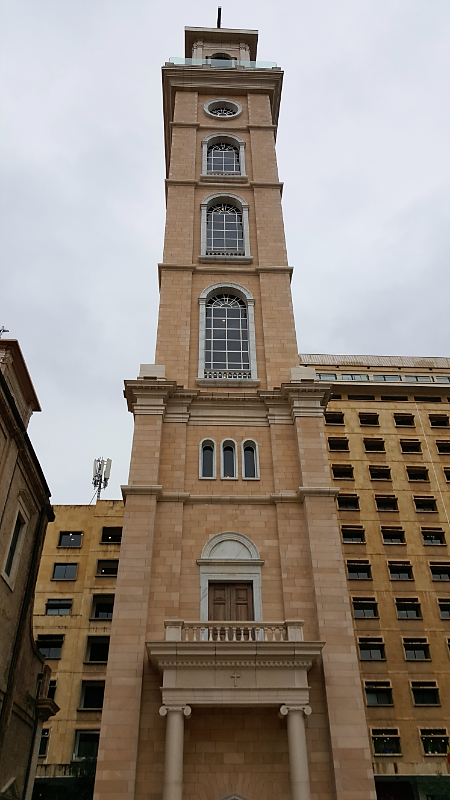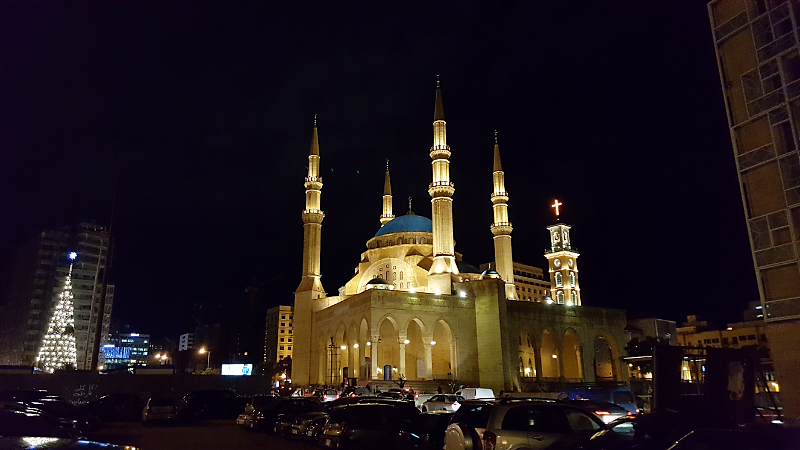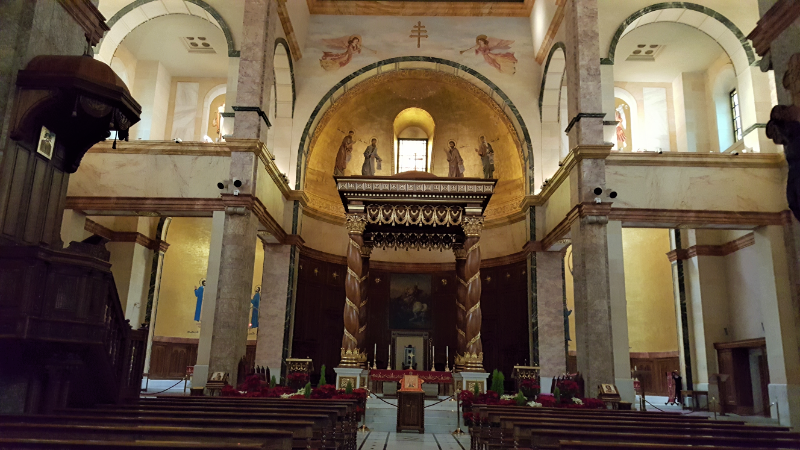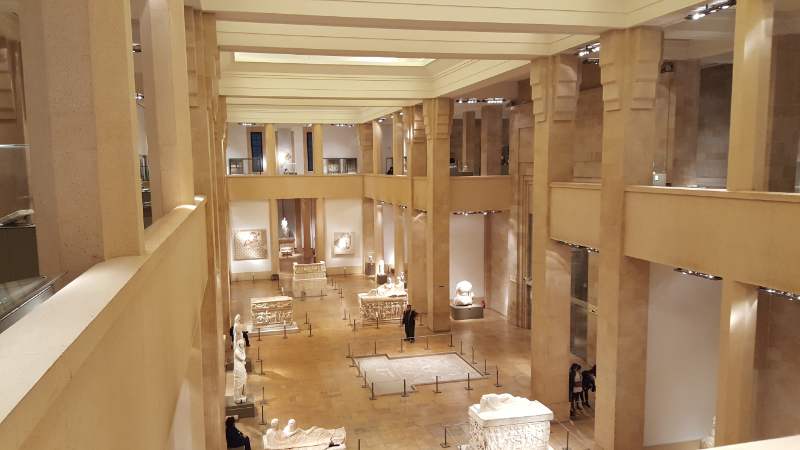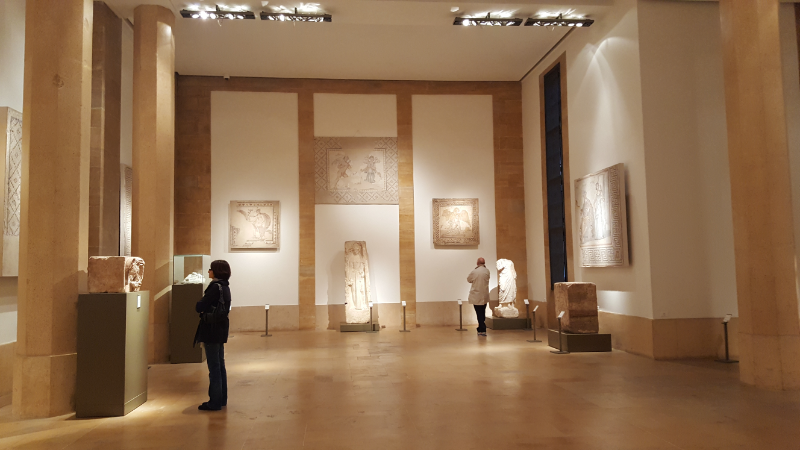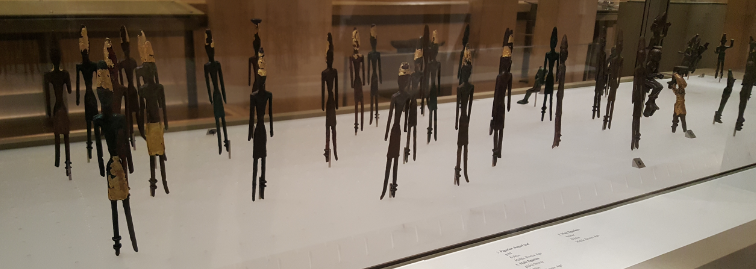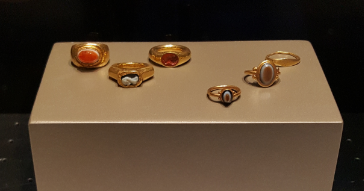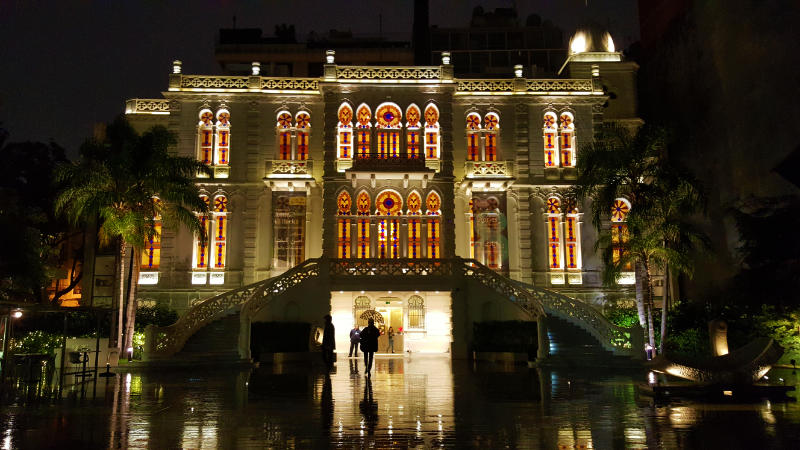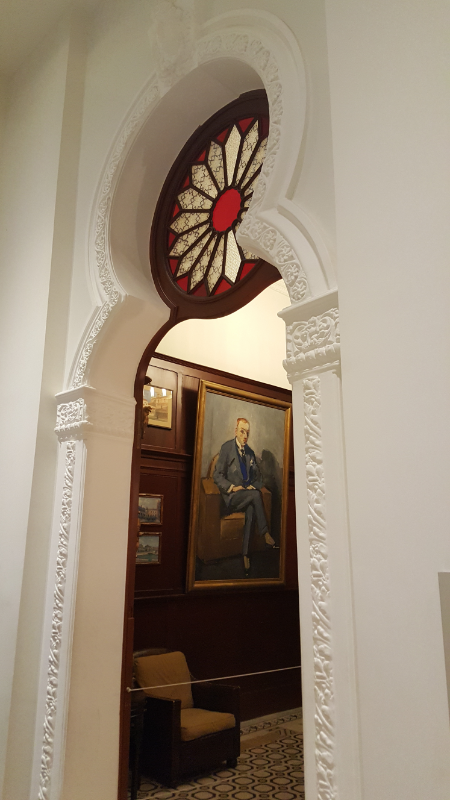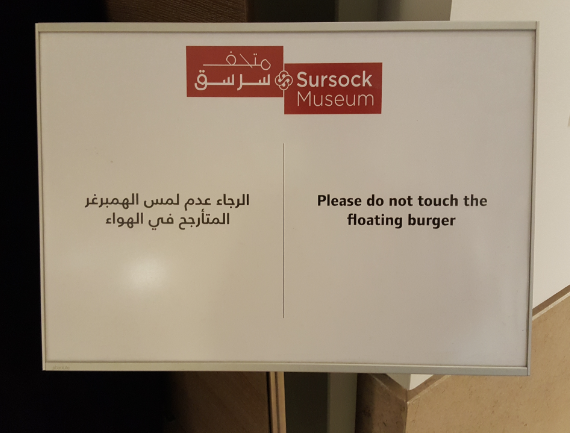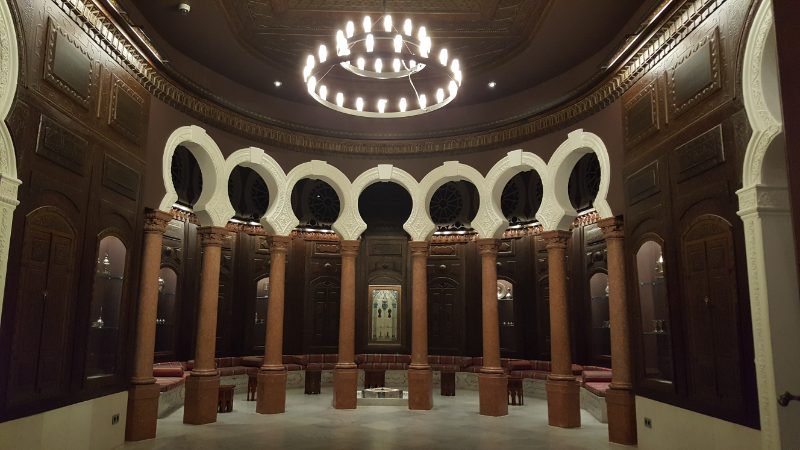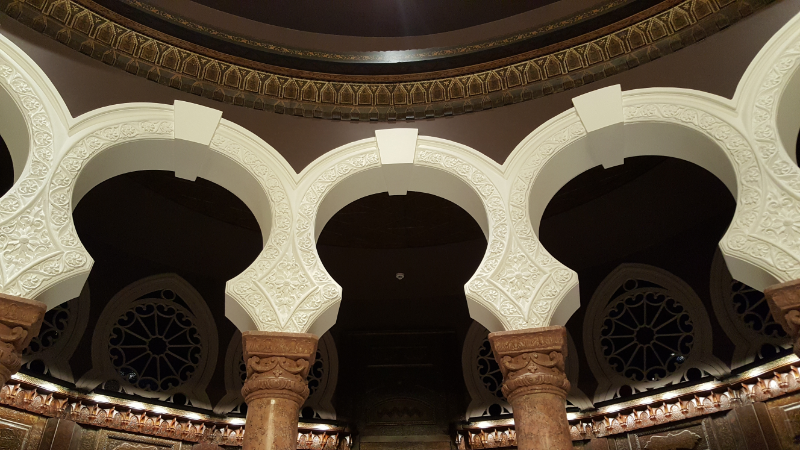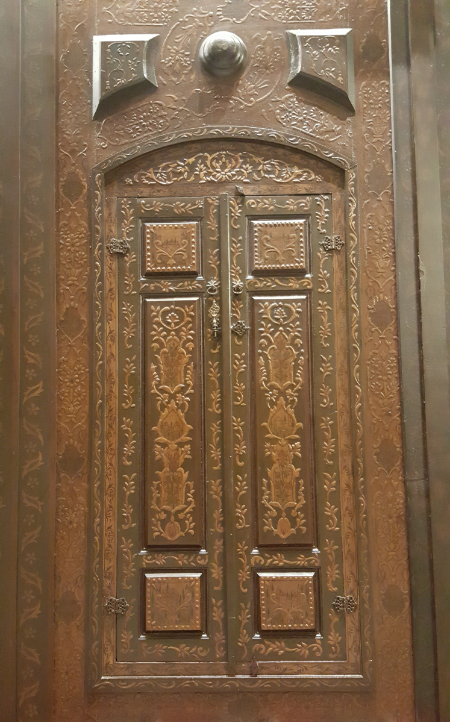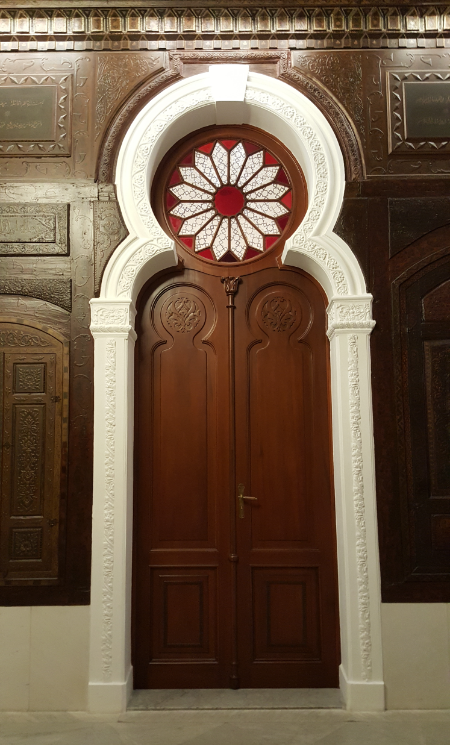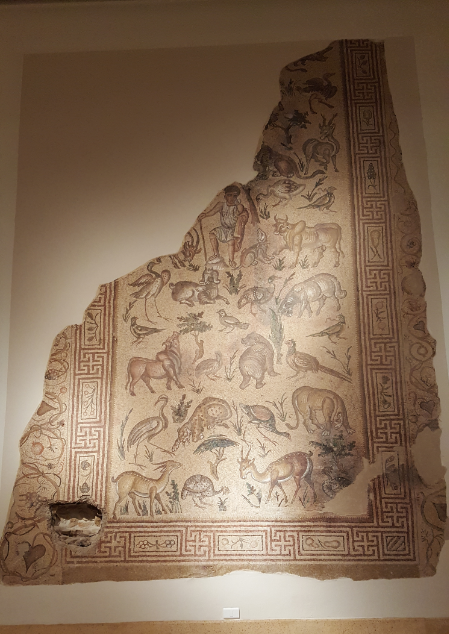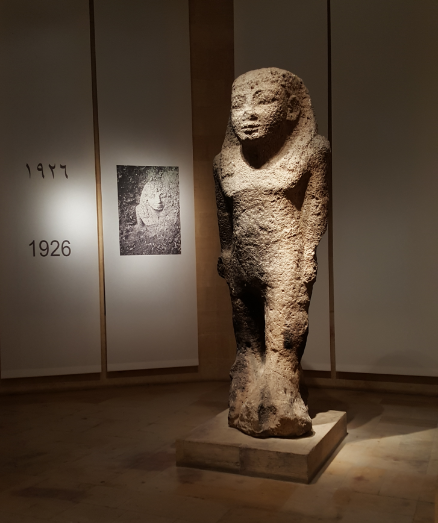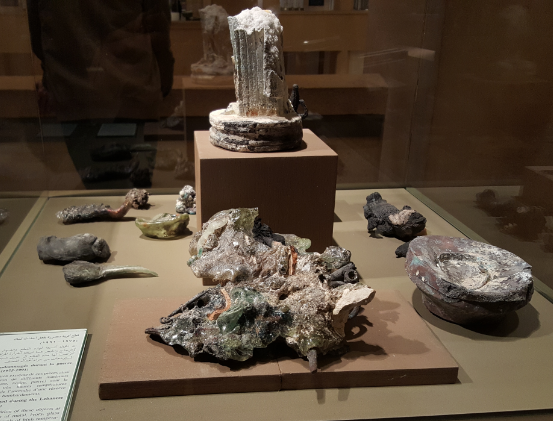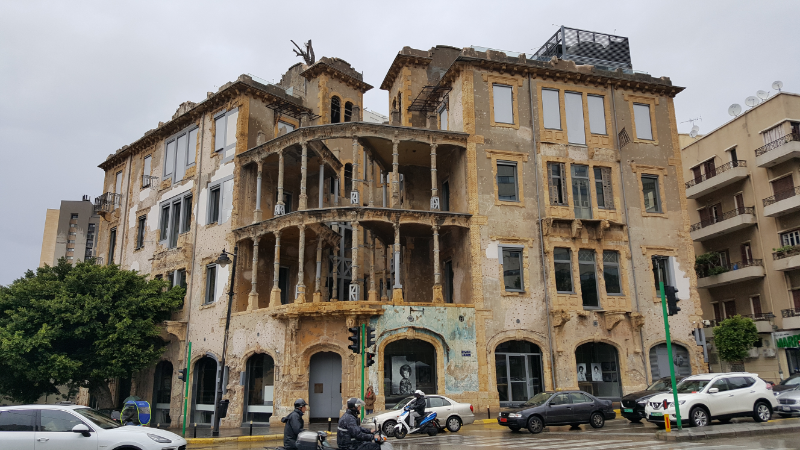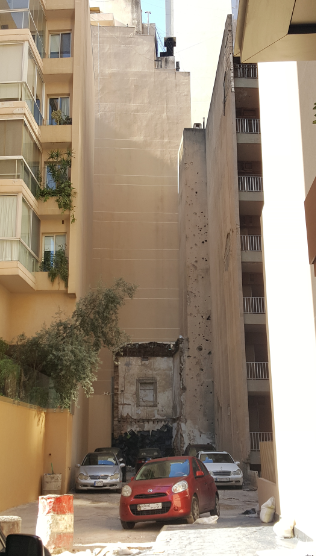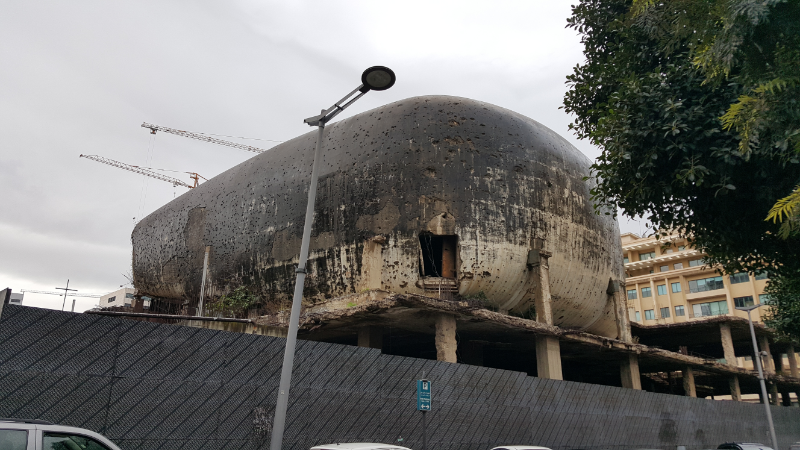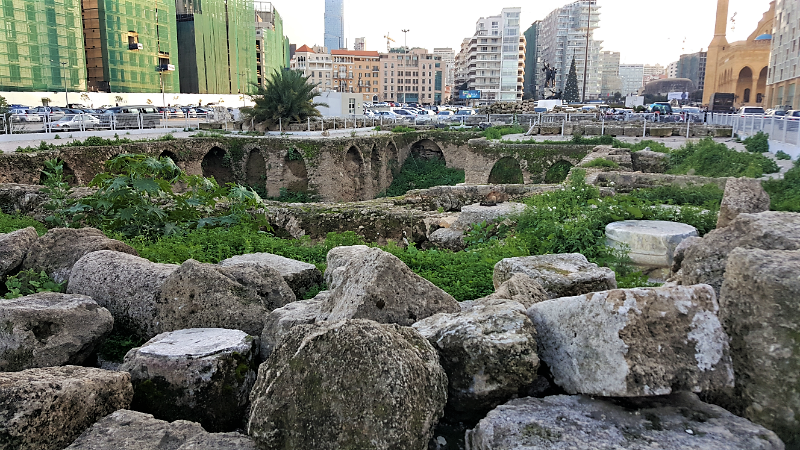
Dubai Day started bright and early… and after an INCREDIBLY restful four hours of plane sleep on my flight from Beirut. My flight landed at 4:45AM, I zoomed through immigration, and I tried to somewhat pull myself together in an airport bathroom before venturing out into the world.
My first stop was the Burj Khalifa, aka the tallest building in the world. You can schedule a time to go up to one of the viewing decks (I opted for the lower one because I’m not rich), and I signed up for a sunrise time slot. I made the mistake of going to Dubai on a Friday. That was stupid because Friday is the Muslim Sabbath day, and in the UAE, it’s a “non-work day”. It didn’t mess me up TOO much, but most things opened later in the day which wasn’t ideal since I got in so early in the morning. The metro wasn’t open yet, so I took a cab from the airport and got dropped off next to the building.
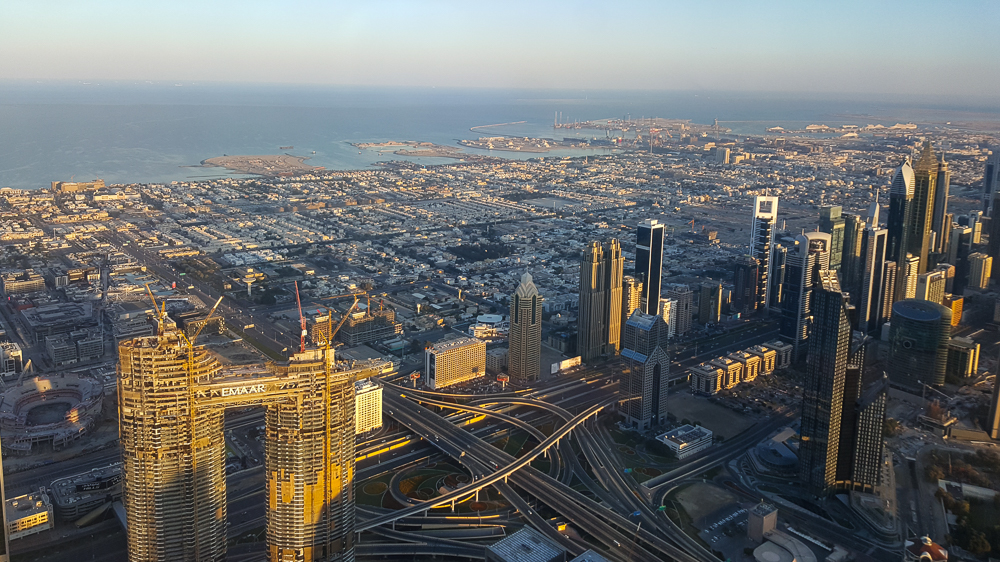
The thing about being “next to the building” is that when the building is 828 meters tall (2,716 feet), the base of the building is not small. I had NO idea where to find the correct entrance to go to the viewing decks, so I just walked in a direction that I thought made sense until a guard told me I was going the wrong way and redirected me. No doubt that’s a normal occurrence in his job.
The walk to the right entrance was about 15 minutes, and I didn’t mind one bit because the world was quiet, and the city was still asleep. That’s one of my favorite times in a city (though I hate being awake so early).
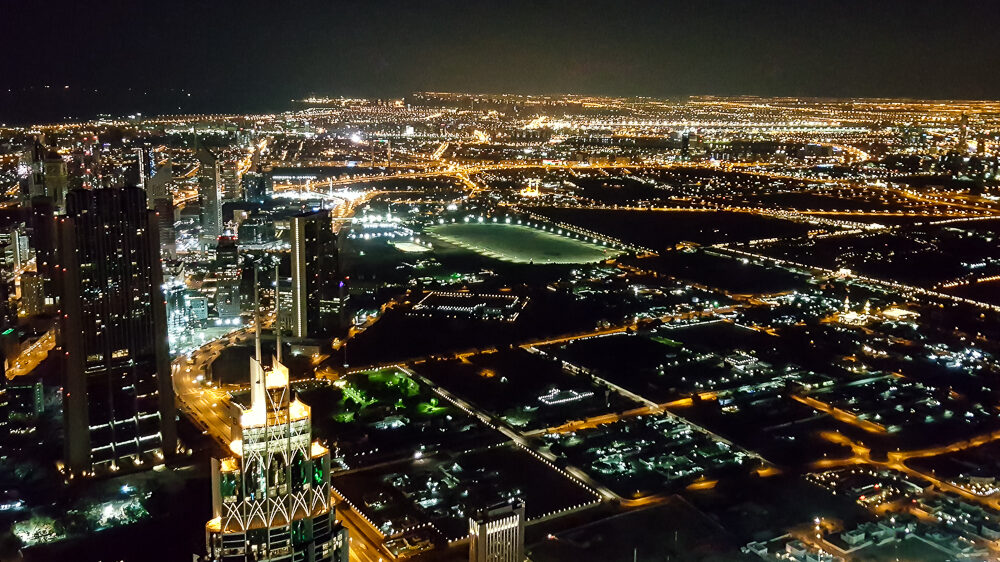
One of the best parts of going to viewing platforms in tall buildings is getting to learn about the building. They always have information about the design and how it was built. Learning about the process makes the experience so much more interesting!
Excavations for the Burj Khalifa started in January of 2004, and it was officially opened in January of 2010. Even though it boasts a height of 828 meters (2,716 ft), the top floor is located at 584 meters (1,915 ft). The rest is just a ridiculous spire to make it taller.
The piles that make up the foundation system are 50 meters deep (165 ft). They also had the challenge of making sure that the in-ground structure could withstand the harsh minerals found in the soil. After a year of construction to prepare the foundation, work started on the floors. They created a process that allowed them to pour the concrete for one floor every three days! They also pumped concrete from the ground up to 601 meters (1,972 ft) which is about 3/4 the height of the building. That set another world record (there really is a world record for everything).
The quantity of building materials that went into the structure is insane. The foundation alone used 45,000 m3 of concrete (58,900 yd3), which is like if you filled 18 Olympic swimming pools, and the superstructure used another 330,000 m3 (431,600 yd3) or 150 more swimming pools. If you lined up the steel rebar end-to-end, it would go a quarter of the way around the world.
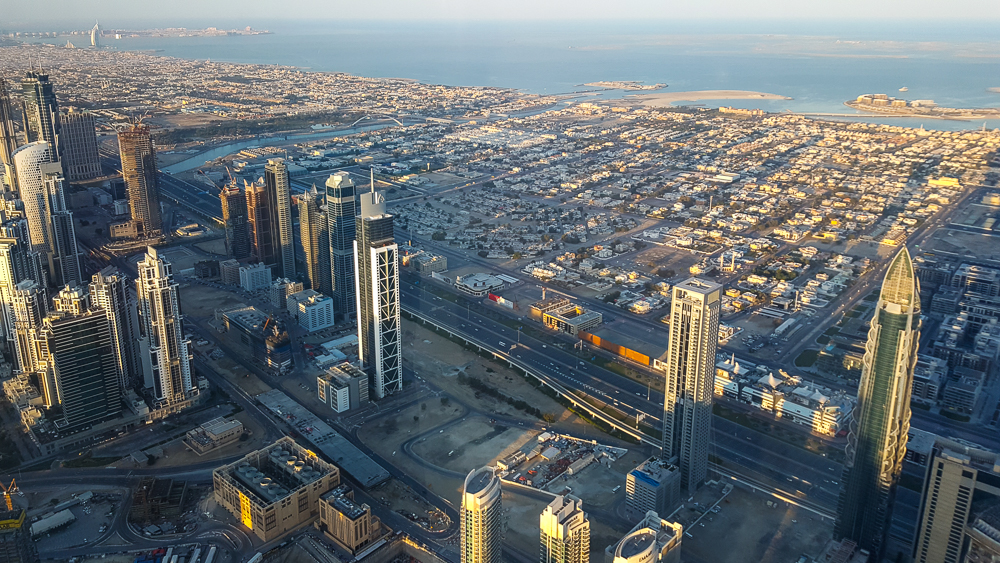
During the summers, temperatures easily reach over 44 degrees C (about 110 degrees F). In order to keep work going through the summer months, concrete was poured at night when the sun was gone and temperatures were lower. Also, as the tower’s height increased, workers were subjected to stronger winds, making their work more challenging and dangerous. Another crazy statistic for you: 22 MILLION man-hours went into the construction.
The building’s shape was determined by its structural requirements. A Y-shaped floor plan was selected to add stability, and the weird shape and setbacks were designed to reduce the impact of wind on the building. The occupied levels were built with poured concrete floors, but the structure of the spire is entirely steel. It has 54,000 windows. Can you imagine being in charge of window cleaning??? I wonder if they ever do clean the windows because it seems like that would be terribly unsafe. Haha I just looked it up… it takes 36 workers 3-4 months to clean all of the windows. The top 27 levels are cleaned by unmanned machines. (Also, the window-cleaning system cost US$6.3 million which I personally think is insane.)

It holds the titles of: tallest building in the world, tallest free-standing structure, tallest man-made structure, building with the most stories, highest occupied floor, highest outdoor observation deck, and a few more. It houses a hotel, apartments, a restaurant, and offices. At its base is the Dubai Mall, filled with expensive stores and ridiculous attractions such as an ice rink and an aquarium.
After my brain was filled with knowledge, I took an elevator to the 124th floor. I think it only took a minute, and the elevator was so smooth that you could barely even tell it was moving. For reference, I live on the 7th floor of my building in Armenia, and I’m fairly certain that the elevator there takes longer to go 6 floors than this one takes to go 124. Not sure if that’s a compliment to the Burj Khalifa elevator, an insult to the one in my building, or a little of both. Apparently, the building is so tall and the elevators are so fast that you can watch the sunset twice from the building, once from the base and once from the observation deck.
At the top, I wandered around a bit before the sun started to rise. It was still completely dark outside, so I got to see the city lights all the way around the building. About half an hour before sunrise, I claimed a spot next to the windows with a good eastern view and waited.
It was awesome getting to see the world light up and the city wake up. The streetlights gradually turned off, along with the building lights. The world got brighter and brighter and the sky more and more orange. Then, finally, the sun broke over the horizon, and everyone cheered.
Based on the group’s reaction, you’d think no one had ever seen a sunrise before, but it felt extra special that day. You know how things like the sunrise or stargazing can make you feel like your problems or day-to-day worries are so small? Like there’s a whole big universe out there, and you’re just a tiny part of it? In that moment, as we watched the sunrise together, It didn’t matter where we were from, what language we spoke, or what our beliefs were. Everyone, young and old, had the same look of excitement and awe on their face. The sun rises every day, it rises in every country, and that morning, it shined its light on our shared humanity. At our core, we’re all the same. And we all love sunrises.
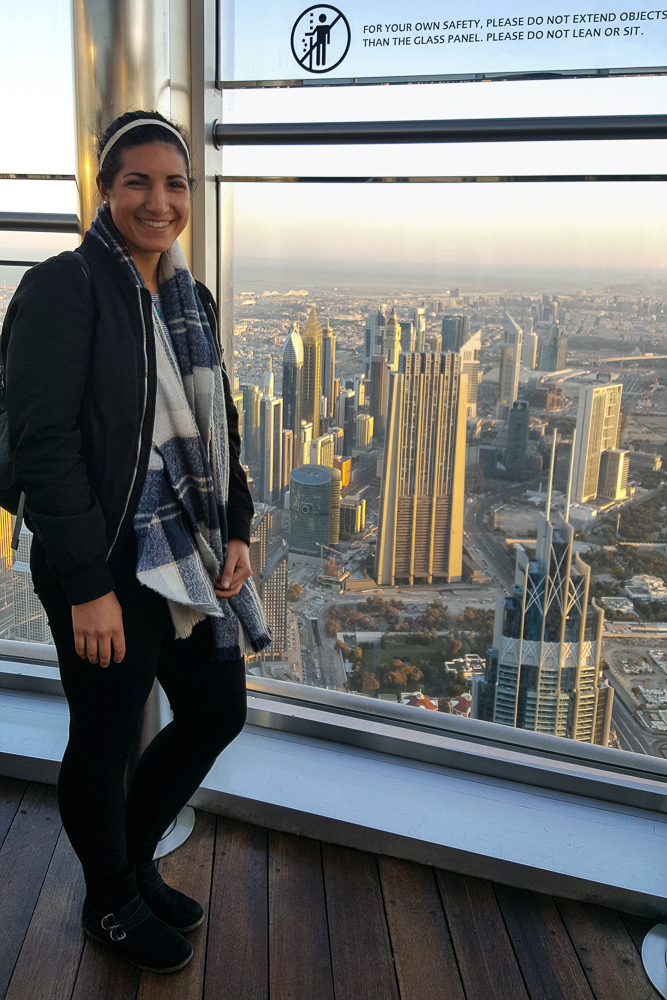
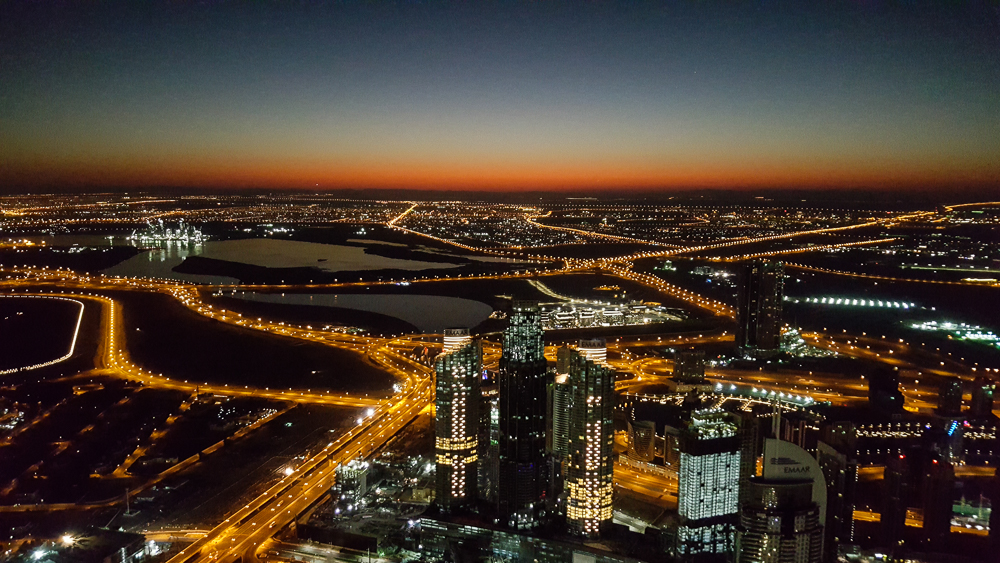
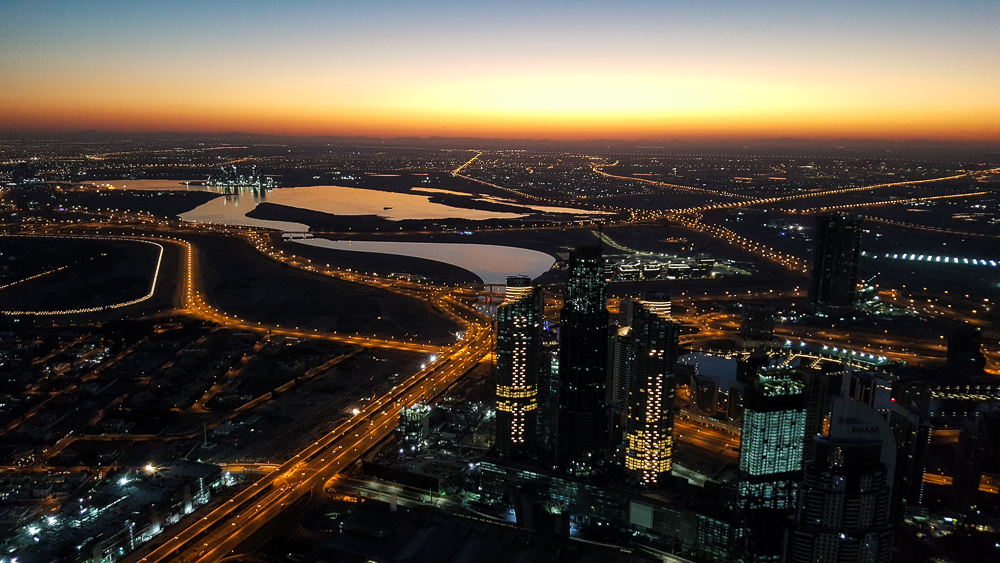
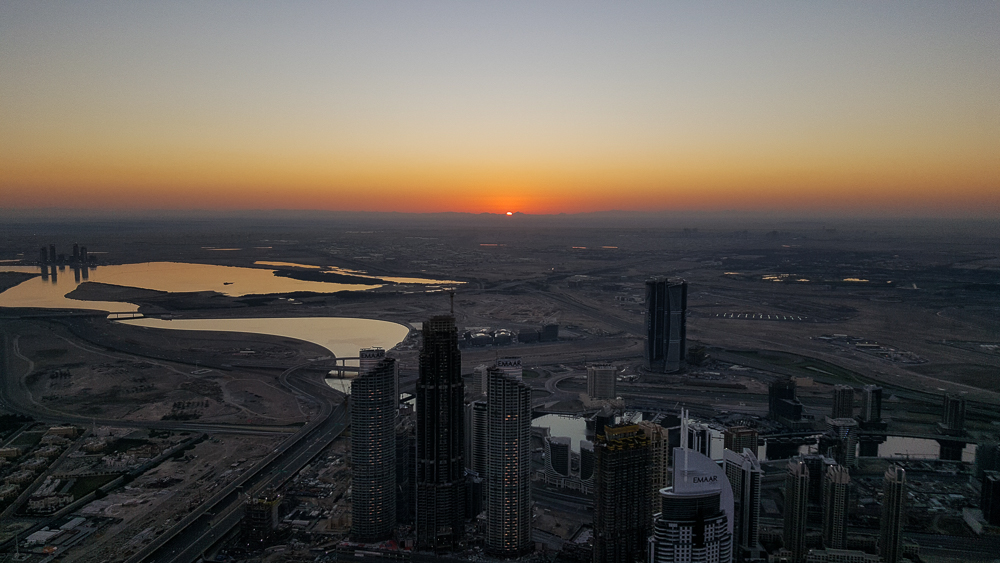
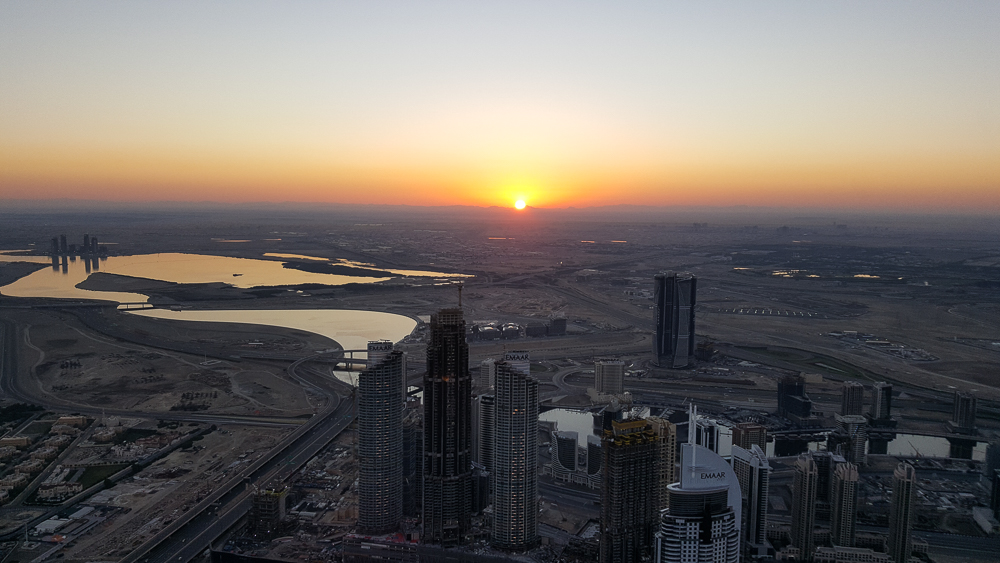
After the sun rose, I walked around again and took another look at the city. It’s cool how light transforms things. The city has a completely different personality during the day. It was like I got double the value for my ticket because I got to see two different Dubais, or maybe even three. Night Dubai, waking up Dubai, and daytime Dubai.
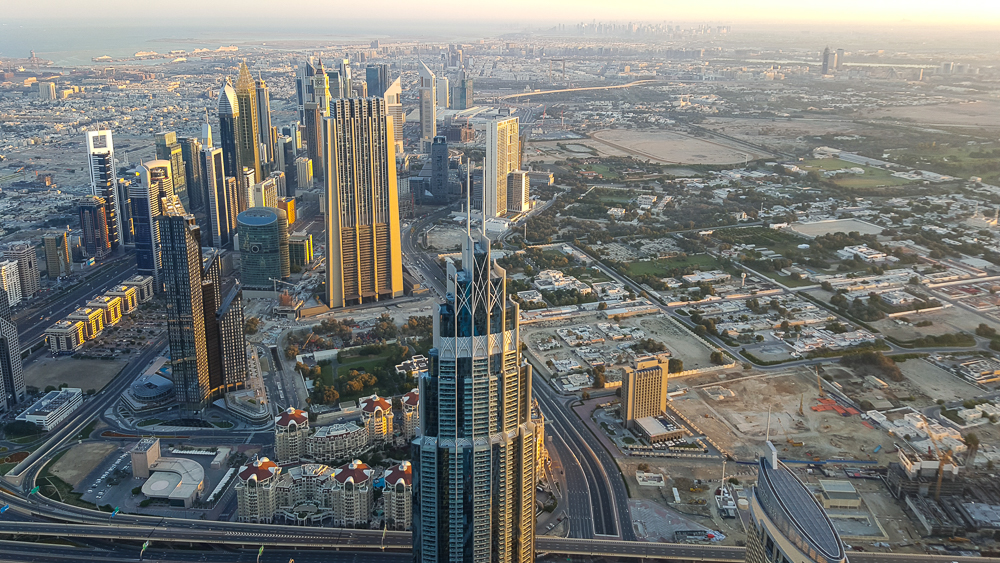
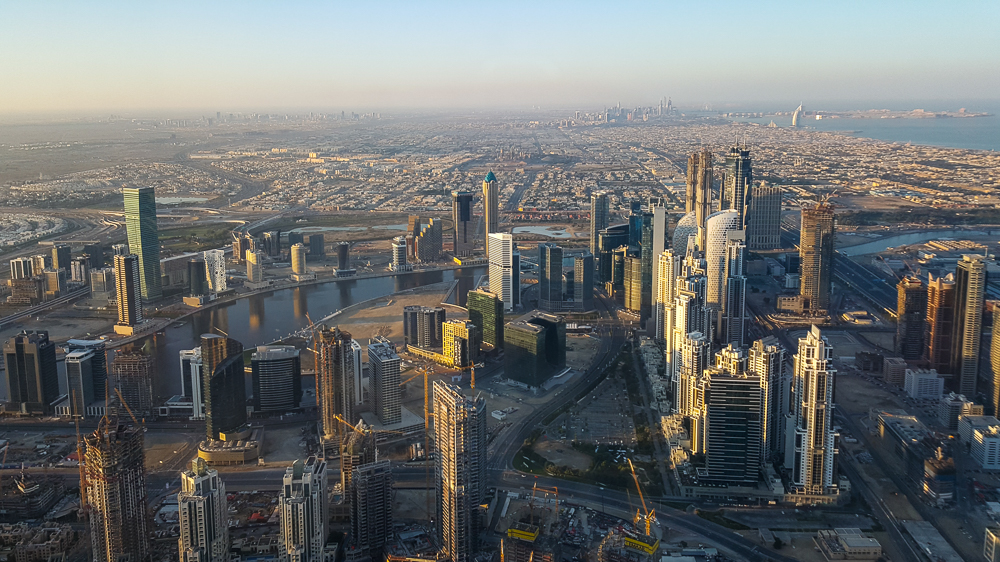
I stayed there longer than anticipated. By the time I got downstairs, it was about 8AM. Part of the sunrise deal was a drink and breakfast sandwich, so I still had to eat before moving on to my next activity. The only drinks included were different types of coffee (the ongoing struggle of eating and drinking like a child), so I just asked for a cup of hot water. The guy working there thought it was weird (who drinks a cup of hot water in the desert?), but I conveniently had a hot chocolate packet in my backpack. Score!
I was originally planning to take a bus to my next stop at 8:30, but at that point, I figured I might as well take my time and wait for the metro to start running at 10. After breakfast, I headed into the mall to poke around a bit. The stores were mostly still closed, but I wasn’t interested in those. I got to see the aquarium from the outside (you can pay to go in, but even without entering, there’s a huge tank visible from the mall), the ice rink, the “human waterfall”, and the general ambiance of the mall.
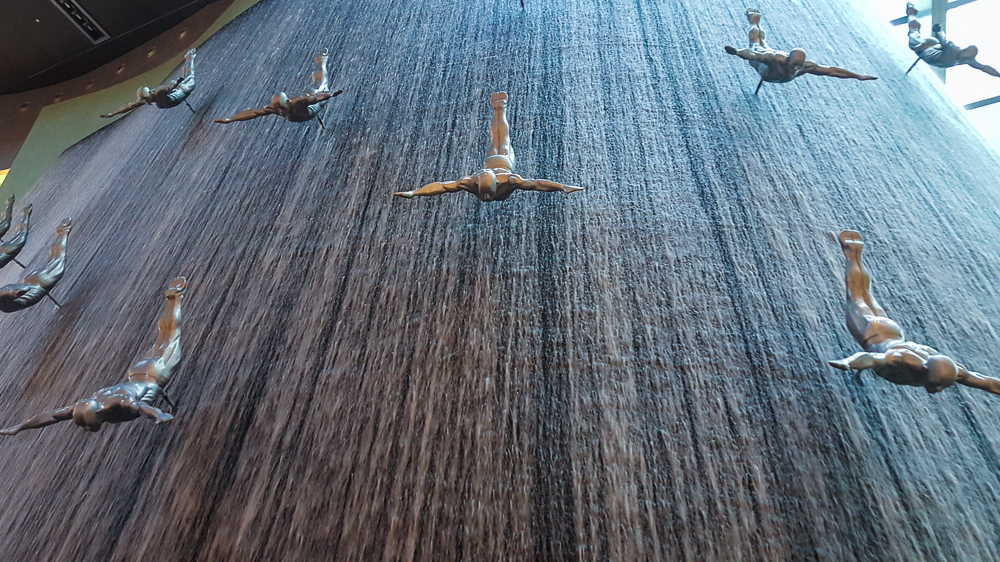
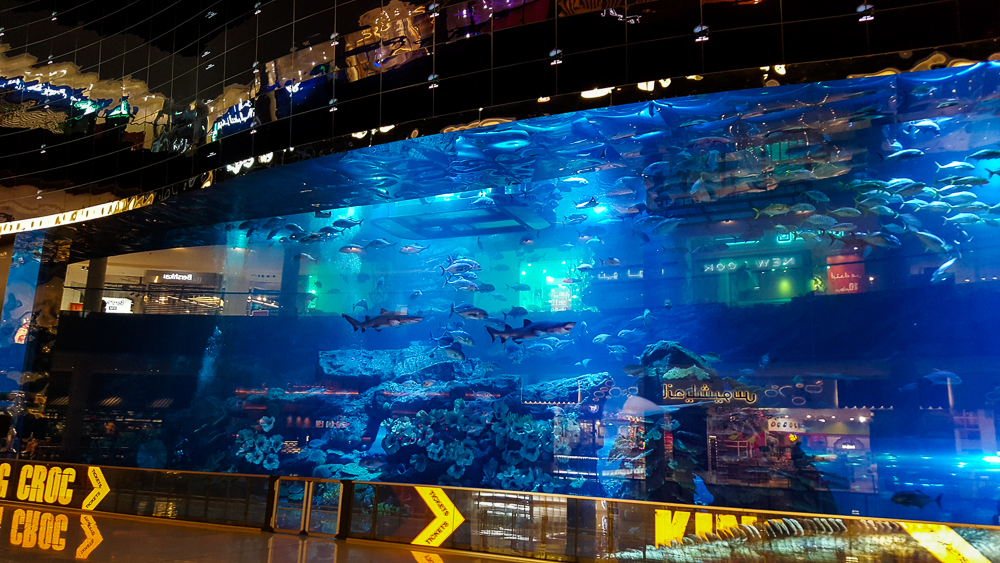
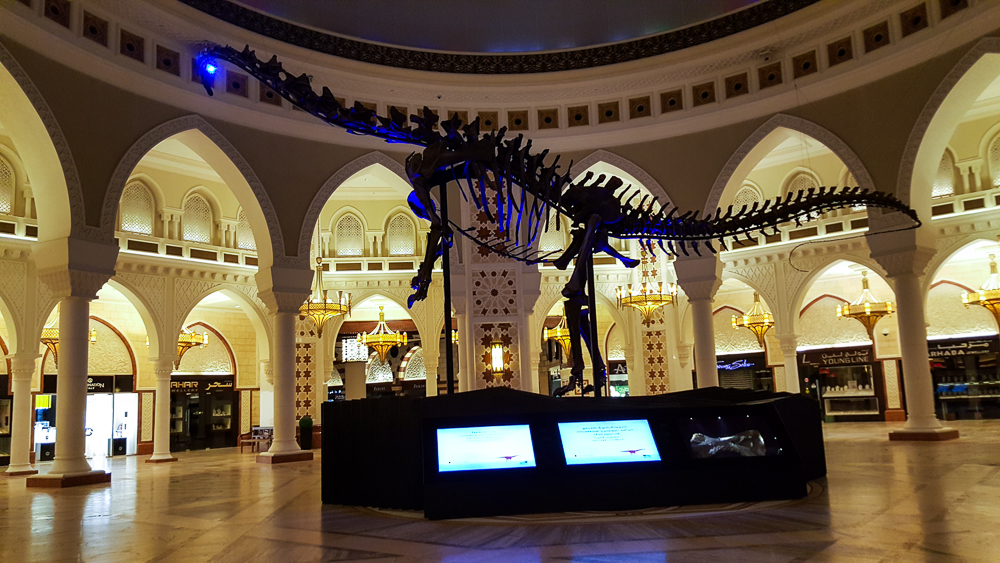
Between the mall and the metro, there’s a crazy long “metro link”, aka a series of above-ground tunnels connecting the two. I didn’t mind the walk because the tunnels are lined with floor-to-ceiling windows, and it was cool to see the city from a VERY different perspective than the top of Burj Khalifa.
To spare you from spending one day reading this post about one day, to be continued…
Check out the continuation here.
Related Posts
Dubai First Impressions – get a feel for the city with a list of my first impressions
Dubai Mini-History Lesson – follow Dubai’s development from a small fishing village into the international, skyscraper-filled city it is today
Dubai Marina and “Old” Dubai – join me as I zig-zag my way across the city after leaving the Burj Khalifa, exploring Dubai Marina and attempting to go back to Dubai’s roots in not-so-old “old” Dubai
Galata Tower (Istanbul, Turkey) – enjoy a panoramic view of Istanbul from the top of Galata Tower… it’s significantly shorter than the Burj Khalifa, but the view is no less impressive
Sky Garden (London, England) – look out over London from the Sky Garden, plus take a stroll through Hyde Park and past Buckingham Palace and St. Paul’s Cathedral

